Many teachers and educators stubbornly talk about the benefits of educational toys. In fact, such entertainment is aimed at developing some kind of skill or skill in a child: fine motor skills, knowledge about colors, sizes, numbers, and so on. For each age, toys are selected individually, because what is interesting one year old baby, is unlikely to attract the attention of a five-year-old.
0-12 months
At this age, the baby is only aware of his abilities, so it is important to develop coordination, the ability to concentrate, and a grasping reflex. Toys should be bright, textured and light: beads, rattles, mobiles, rings, rag balls, developing mats - what a child needs up to 6 months old. For older children, you can find musical toys, sorters, nesting dolls, and so on. From 9 months you can offer glove and finger puppets, strollers, soft books, insert toys, cubes, and so on - they are aimed at developing motor, speech activity, as well as fine motor skills.
1-2 years
Now you can give your child toys that can be disassembled and assembled, by the age of one and a half, offer your child objects that can be generalized according to one attribute: color, size, and so on. By the age of two, you can play object games - building, story games, use various cards, pyramids, sorters, books, and so on.
2-3 years
The time has come to develop not only fine motor skills but also the ability to distinguish the world around. Developing toys for this age include crafts made from paper, natural materials, plasticine, story and subject games to test knowledge and skills, home-made cards that simulate situations.
3-5 years
All possible games for learning numbers, alphabet, seasons, hours, children board games, puzzles, constructors, lotto, books, development boards and so on.
What improvised materials can be used?

Dear needlewomen, do-it-yourself toys can be made from various materials: scraps of fabric, yarn, old clothes. Using a variety of accessories (velcro, large buttons, zippers, buttons, buckles, patches, and so on - the main thing is that the child cannot tear them off and put them in his mouth), candy wrappers, cereals, pasta, bells, foil, fillers like foam rubber or synthetic winterizer and other things.
Do-it-yourself developing cube: master class

To make such a cube, you will need: 6 equal squares of fabric of different colors, synthetic winterizer or foam rubber for filling, interlining, various accessories - buttons, ribbons, scraps of fabric, brooches, and so on, threads, a sewing machine.
From the fabric you need to cut 6 equal squares.

From interlining, it is necessary to cut squares 1.5 cm smaller than fabric ones. We apply them to the fabric and heat it with an iron so that the interlining sticks to the base.

Each side of the future cube needs to be decorated: make an appliqué out of shreds, sew on beads, snakes, buttons, and so on. The easiest way is to draw a drawing with a disappearing marker, and then lay it out on the fabric. For example, like this.
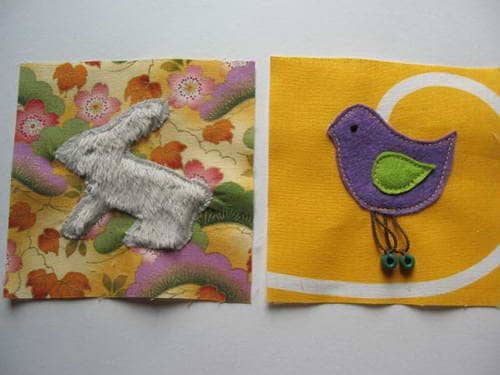
When the decorative part is finished, you need to sew 4 squares into one strip.

Then we sew two more squares.
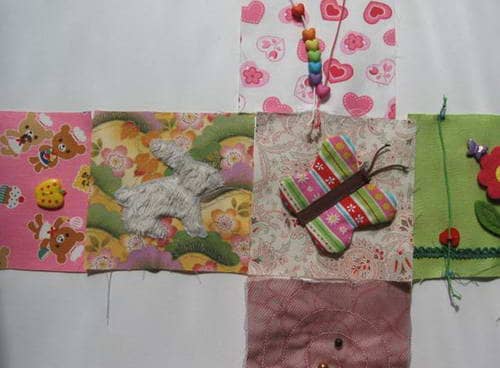
All stitched seams must be fixed, you need to sew along the contour of the non-woven edges. We sew a scan: two faces need to be docked, and the allowance of the third is wrapped inward.

In the corner of the last edge, you need to leave a hole: turn the finished product inside out, stuff it with padding polyester and sew it up with a blind seam. You can also put a bell or rustling paper inside the square. The product is ready!

We sew a developing pillow: a master class
Educational toys - the concept is quite voluminous, they can also include a pillow, but not the usual one for sleeping, but decorated with voluminous applications and details - an excellent tool for developing fine motor skills. Pillow "Birdhouse" will be interesting for children of different ages.

To create it, you need multi-colored shreds of fabric, interlining or soft material like teak, synthetic winterizer, braid, narrow ribbon, thread, needle. Optionally, you can sew on beads and buttons.
From teak we cut out the pillow itself in the form of a house (2 parts), sew it along the edge, leaving a small hole for stuffing.

From a bright fabric we sew a pillowcase of the same shape.
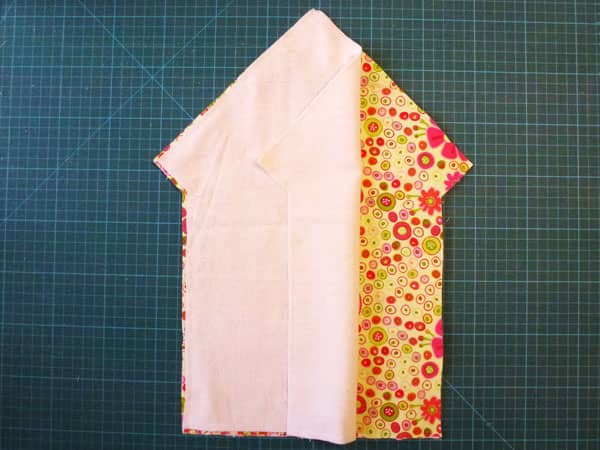
From two rectangular flaps folded in half, we make a roof for the birdhouse, decorate it with braid.
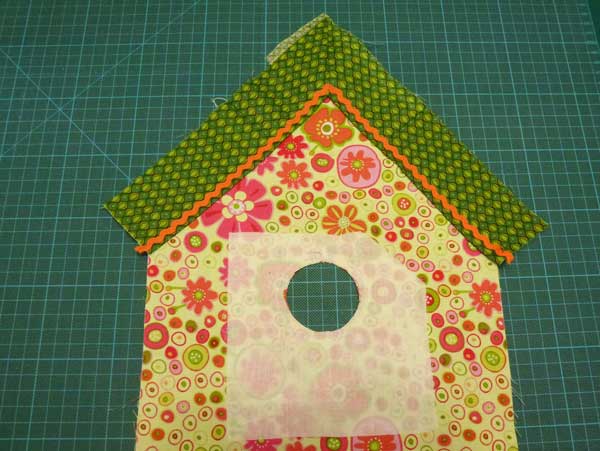
We cut a round hole in the frame of the house itself, sew the edges and decorate with braid.
Now you can sew a bird (2 parts for the calf, 4 parts for the wings), and you can also make eggs (two oval parts sewn together).

We use a synthetic winterizer as a filler, after which the hole in the body is sutured. We attach a ribbon to them, we attach the second end of the ribbon inside the birdhouse.
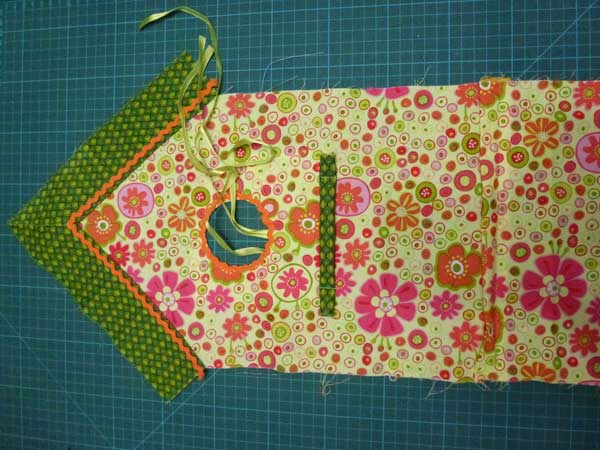
On the outside, we sew a pocket into which the “inhabitants” of the nest are placed.
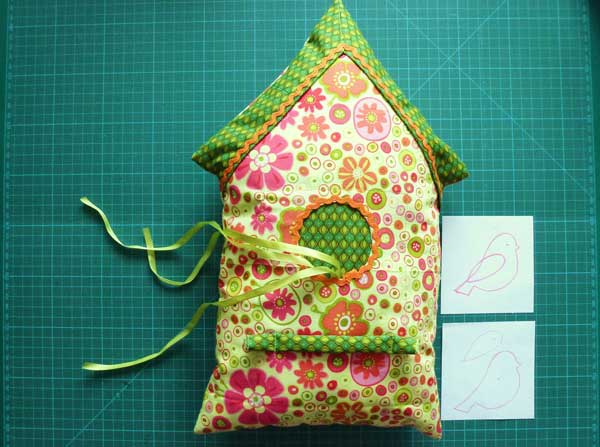
The pillowcase can be sewn together or fastened with a zipper - then the cover can be washed. We put a stuffed pillow into the pillowcase, you can decorate it with appliqués and beads and start the game!
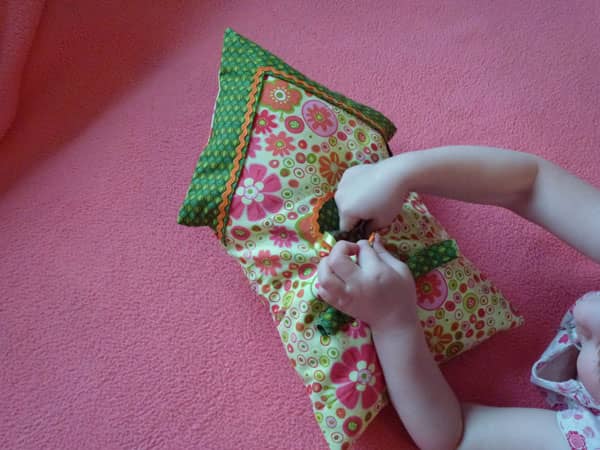
A few more options for developing pillows:


DIY lacing toys
In babies, the fingers are still very inept, so it is very difficult for them to perform precise movements and coordinate their actions. Fine motor skills are not only the development of certain areas of the brain, but also the preparation of the hand for drawing and writing. Lacing games are an excellent simulator that you can make yourself without any material costs.
The easiest way is to cut out a shoe-shaped figure from thick cardboard, make holes with a hole punch, arm yourself with suitable laces and offer your child new fun.
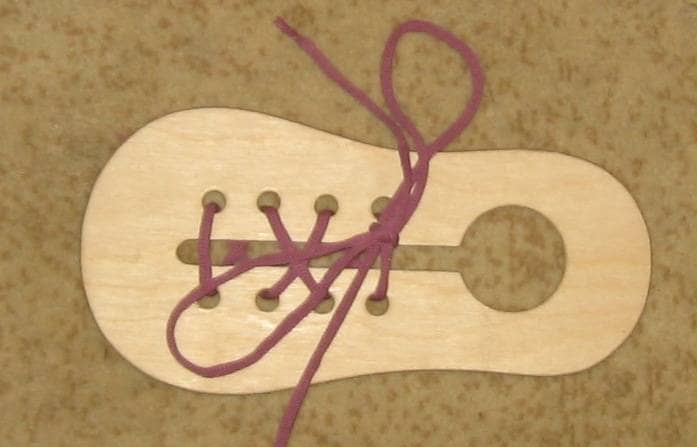
A more complex option is lacing toys in the form of animals or the so-called “sew-on” with prepared parts and holes: for example, a tree with leaves or a hedgehog with apples, or a cheerful sun with rays.


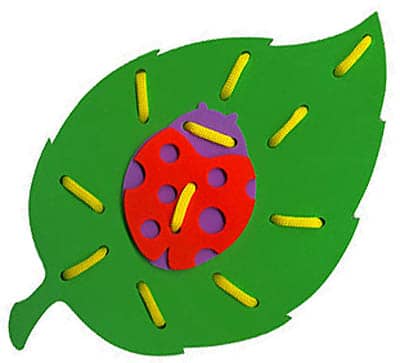
Developing mats for children of different ages
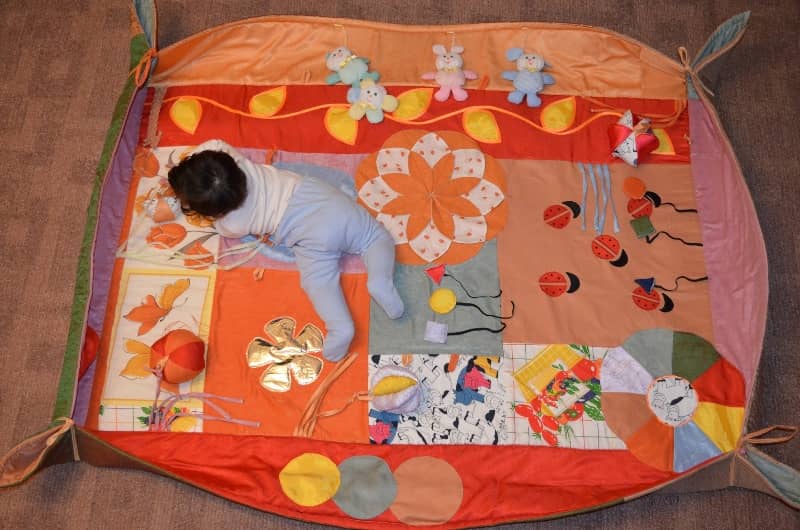
Choose a dense base for the rug: it can be a fabric with a padding polyester backing or an old one. Baby blanket- then the child will not be cold to crawl on the floor. The background can be made both plain and from large pieces, it is easiest to put the fabric on an adhesive base - it will last longer. Each element - from the button to the trimming of the fabric, is attached carefully so that the child cannot tear them off. It is best to duplicate the buttons from the wrong side. Velcro, rattles, rings, bags with rustling paper inside, buttons and applications - all this is suitable for decoration. By the way, if you wish, you can also knit the rug - whoever is good for what, as they say.
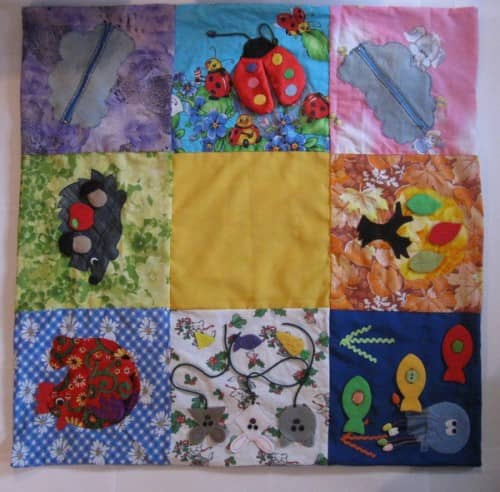
By the way, for older children, rugs can be themed: they can be decorated with animal figurines, numbers, letters of the alphabet, or even divided into 4 parts a la 4 seasons and decorated with snowflakes, leaves and other paraphernalia.

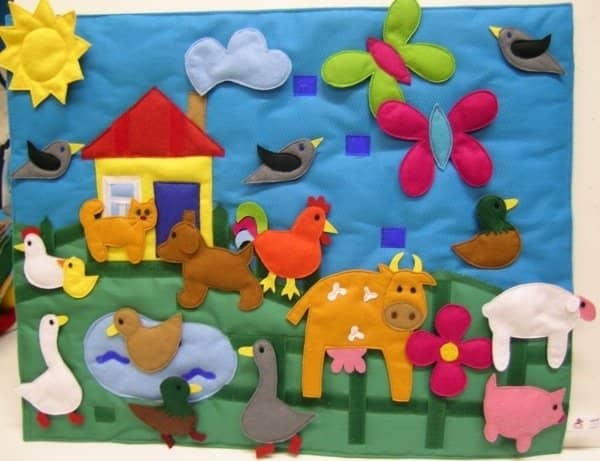
By analogy, you can make educational books with soft applications, the main thing is that they be bright and interesting.



For the little ones, you can sew or knit a relief rattle bracelet: in the form of a flower or a funny animal. Inside you can put rustling packages or bells.
But such a bracelet contributes to the development of the child's vision and hearing, as well as coordination of movements.
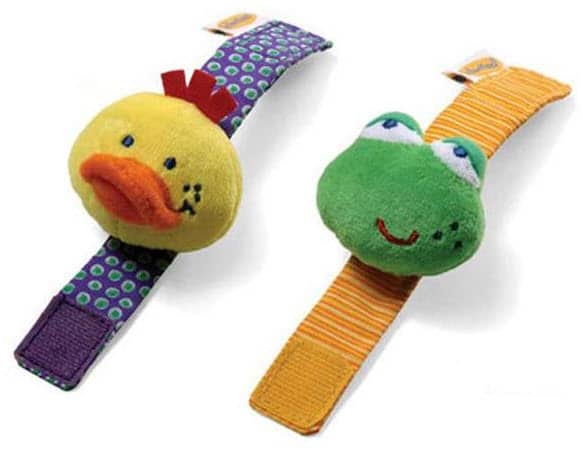
You can also make so-called slingobuses - they also contribute to the development of tactile sensations and fine motor skills. You can also attach funny knitted key chains to them. The easiest way to make beads is to crochet or knit them, and then collect them on a dense thread.

You can also make a developing stand from improvised materials, there are so many interesting things on it that you can turn, unfasten, press - a lot of fun for real explorers! And at the same time you can learn colors, numbers, letters and so on.

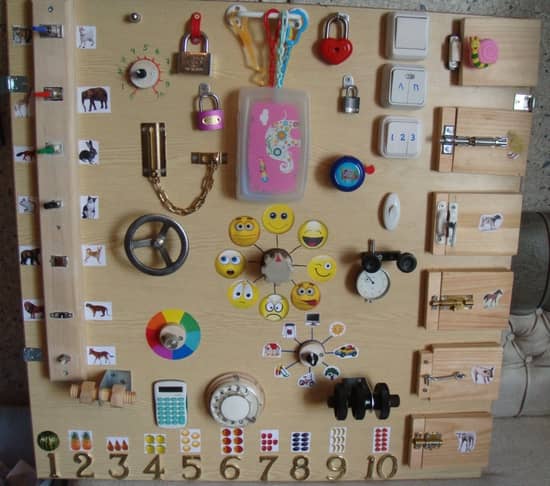
You can make rag pads or figurines and fill them with various cereals - buckwheat, rice, beans, and so on. Give it to the baby - let him touch it with his fingers: both he has work and his mother has a little rest.
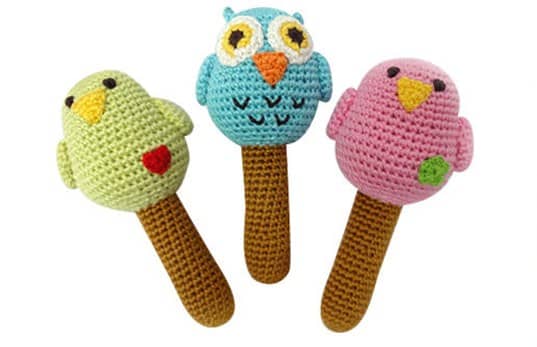

For children from 3 years old, you can make a coloring or application with leaves of a tree, figures, letters, numbers, and so on can be cut out of cardboard or fabric and invite the child to recognize the figure by touch. Make cards, design crafts from matches, wire, polymer clay, plasticine, you can make a lotto from old kinders, skittles from bottles, sew rag finger puppets and arrange a performance - this simple action will bring you closer to your child and at the same time it is very useful for the development of the crumbs !
The long-awaited child has finally appeared in the family! Together with him, not only happiness and joy came to the house, but also worries and worries. In the first months of life, it is quite enough for a child to feel your love and care. But, starting from 3-5 months, the child for normal development different kinds of toys are needed.
Starting from this age, parents begin to visit children's toy stores more and more often and buy something special for their baby in them, spending not only a lot of time and effort, but also money on finding and purchasing toys. However, it is not at all necessary to buy children's toys, since they can be easily made from improvised means on your own.
Pros of DIY toys:
- They are safe. It is unlikely that you will make toys from small parts or toxic materials.
- They do not require large investments. All toys can be made from improvised materials or things that everyone has at home.
- They are original in their own way. It is unlikely that in any store you will find a toy even slightly similar to the one you made yourself.
How to make an educational toy for your child yourself?
In order to please your beloved child with a new toy, you need one free evening, improvised materials and a little imagination. Turn on pleasant unobtrusive music and tune in to fruitful work.
So, what educational toys can you make?
Beanbag
At the age of one year, the child needs to put light rattles into the handle and teach him to hold them tightly, shift from one handle to another. Thanks to the rattles, the baby's muscles will begin to "work", the baby will master new skills and movements. It is rattles that begin to develop fine motor skills of the hands.
Therefore, the first handmade toy should be a rattle. To do this, take a small bottle with a tight-fitting lid. You can pour cereals (for example, buckwheat) into it and tighten the lid well.
In order for the baby to be interested not only in “rattling” with a jar, but also just looking at it, the jar must be decorated. It can be tied with a bright ribbon, draw a picture on it.
Also, a rattle can be made from a transparent jar. So the child will have the opportunity to look at what is inside her. In this case, it is worth filling the jar with multi-colored beads or bright buttons.

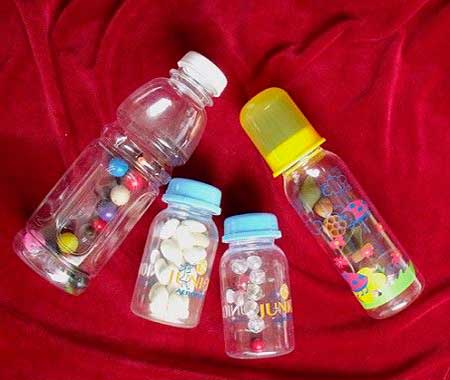
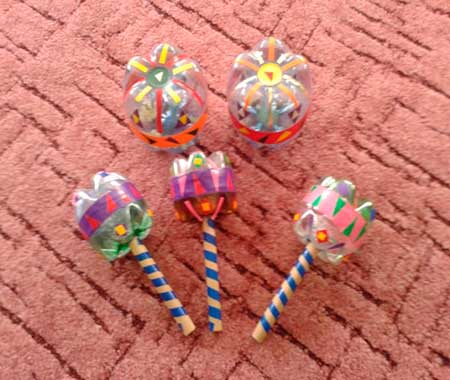
mini pads
For children of 5-6 months are incredibly useful and interesting tactile sensations. This allows you to develop fine motor skills, a sense of touch. Small pillows with a diameter of 7-10 centimeters will come to help in the development of the child. For their manufacture, it is necessary to take fabrics of different texture, color and print.
The big advantage of such pads is that you don’t need to buy special material for them. For this, old things will fit: a colorful dress, jeans that are not needed, a “pregnant bathrobe”, which is no longer needed, and your little ones’ little things will also come in handy. Pillows can be made square, round, oval. The pattern will depend on the shape.
Let's analyze the simplest round pillow. It is necessary to cut two circles of a given diameter from a piece of fabric. In this case, you can make a circle from one fabric, into the second from another from another, so the future toy will turn out. Do not forget to leave allowances of 0.5-1 centimeter, depending on the quality of the material. We fold the two cuts to each other with the right side and sew, leaving a gap of 3-4 centimeters, so that you can turn the pattern outward and stuff the pillow through it. We twist.
In the center, you can sew on a button that you have or you can make it yourself. To do this, take a coin and some cotton wool or synthetic winterizer. Roll up the ball and place it on the coin. Then wrap the resulting blank with a circle of fabric and fasten it at the bottom with a thread. Sew to the middle of the pillow. This technique will make your pillow even more interesting for the child. Now that the shell is ready, we fill it. To do this, you can use bulk materials - buckwheat, rice, millet, sand (look at the density of the fabric, the stuffing should not “leak” out), as well as standard synthetic winterizer, cotton wool and foam rubber. Now you need to sew up the stuffing hole. To do this, use a hidden seam.
To make it more interesting for the child, you can create pillows - animals, decorate with various ribbons, stickers and large buttons. Please note that all parts must be securely fastened and large enough so that the child cannot swallow them, because children's fingers are able to pick out even the most securely sewn beads.

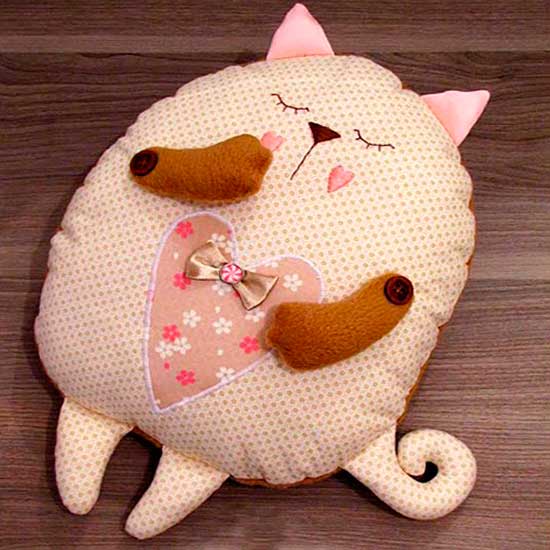
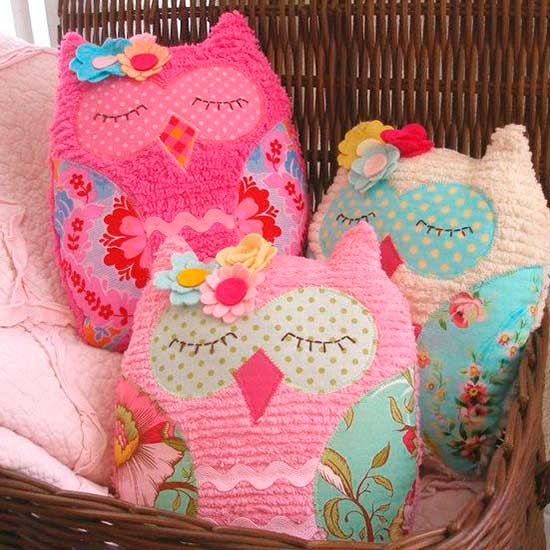
Buying a developmental rug can hit the family budget hard. In cheaper models, low-quality paint is most often used, which can cause allergies on the baby's delicate skin. You can avoid wasting money and be sure of the quality of the finished product if you create it yourself. This does not require large investments, just desire and a little patience and time. In addition, you can include a large number of pockets and attributes in your rug than you will be offered in stores.
So, for the rug you need shreds of different colors and textures. The more variety, the brighter and more interesting for your child. Distinguishing fabrics to the touch, he will begin to understand what is smooth, what is rough, what is cold, what is warm. You can even make a small area from the edge of the wool so that it slightly pricks the baby. In order for the rug to be warmer and softer, make it two-layered and place a rolled synthetic winterizer between the layers. So that it does not move out, and the rug can be washed in case of an emergency, sew it along the borders of the patches.
For decor, you can use fabrics of other shades, various sewn applications. If fantasy and time allow, then you can make your own owl, dog, cat, hamster, penguin or hedgehog. This does not require special skills, it is enough to find detailed instructions on the Internet, make patterns and sew them in a certain sequence to the rug.
Use interesting tricks. Place a rustling material under a few shreds. To do this, use cellophane from store packaging from under clothes. They rustle louder than plastic bags. Pockets will be a great addition to the play mat. You can hide small toys in them, and then find them. The tweeters sewn inside will attract attention and teach you how to press pointwise with your finger or pen.
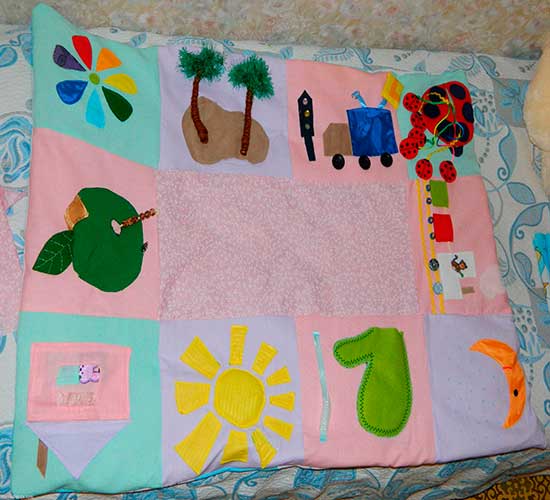
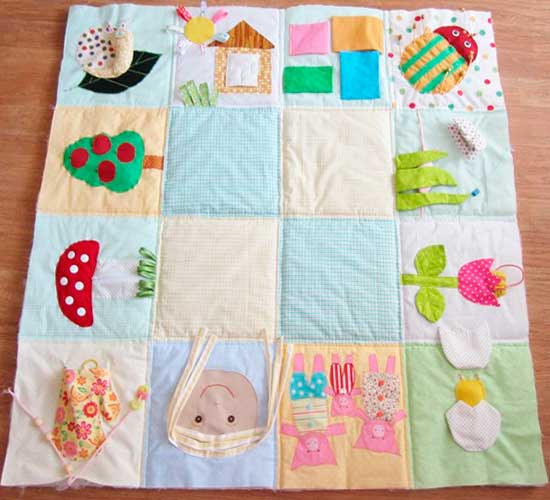
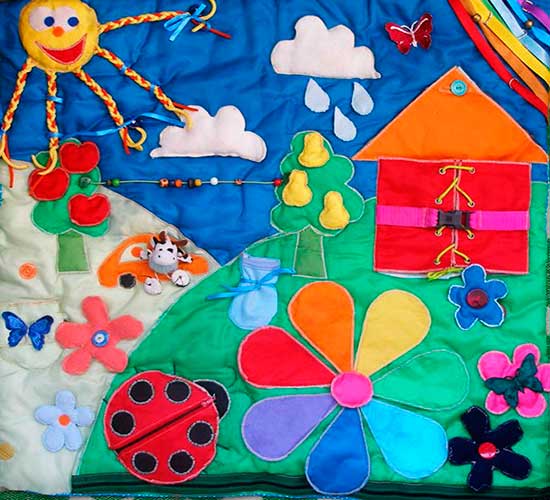
An alternative to a developing mat is a fabric sensory book.
If you set out to create an educational toy when the baby is already sitting confidently, then the rug may not interest him. So, an alternative option comes to the rescue - a developing book. The principle is the same, but this time, it is convenient for the child to hold it in his hands and he needs to turn the pages to see new images, which means he develops coordination and helps to better navigate in space.
To make such a book, you need different square pieces with a side of 20 centimeters. These will be the pages of the book. You don’t need to do a lot of them so that it is not too massive, because because of the applications, the pages will not adjoin each other and will create additional volume. On average, books have about 6 pages. Thus, it is necessary to prepare 12 shreds - the basics.
The child will be interested in looking at a book with multi-level applications. A good example is a house. Opening doors and windows will teach the baby to capture small details with two fingers. Imagine a child opens a window in a book, and there is a fox. Unexpected, joyful and memorable. Thus, the child made a fine-sensory movement, and recognized one animal. Opening windows and a rising tree branch work on the same principle. Mushrooms, berries and flowers should be bright.
It's good if you can sew zippers and Velcro into the book. Various buttons will also be useful inserts, which can be installed in the nearest clothing repair. Eyelets will allow you to create lacing on one of the pages. First, the child will look at it, and then he can begin active training. Use whatever you can find.


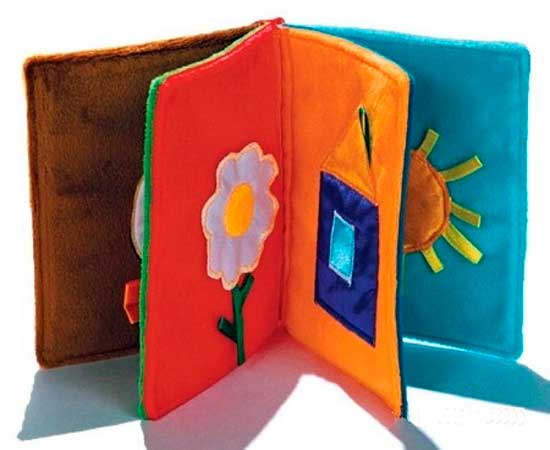
Board "Masters"
This educational toy will definitely not be left without attention, but it will be easier for dad to make it than for mom. To do this, you need to take a wooden base (it can be a cabinet door or part of the countertop). The wooden base must be sanded and varnished. After that, you can fix a latch, a switch, a door lock, hooks, latches, levers and all household trifles that so attract the attention of children on it. Such a "toy" is able to occupy both a boy and a girl for a long time.
In addition, the available switches, hecks and other attributes Everyday life it will be easier to explain when he already has an idea about them. Do as many movements as possible together, commenting on each action over and over again.
It is very useful to make a clock on the board, so you will teach your baby numbers and the concept of time. Let him not understand this yet, but in the future for him, obtaining this knowledge will be easier. Kids at 3-4 years old can already count up to 10-12, and learning by doing is always more interesting.
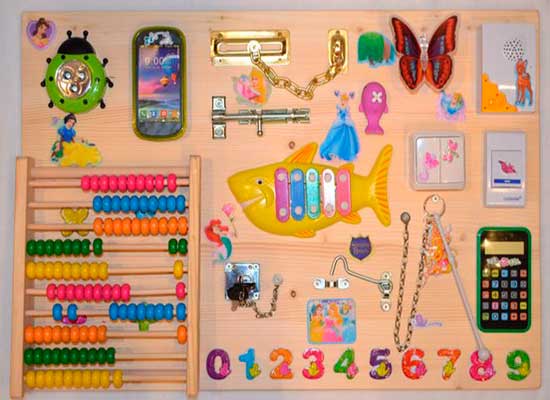
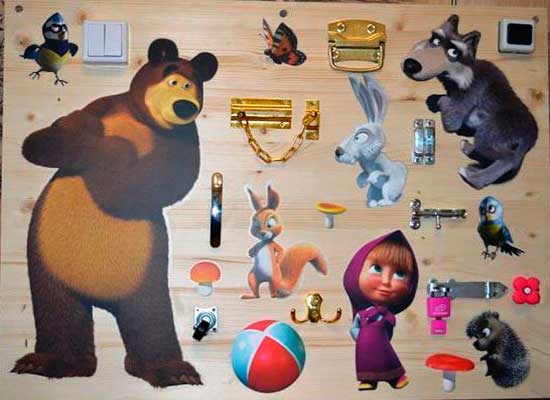

Making beads for the game
Beads can become an original and very useful toy for the development of fine motor skills, and hence the speech of the baby. Ordinary, purchased, inherited by the baby from the mother, will not work. Because most often they use the same beads, approximately the same size and texture. By making it yourself, you can add interesting details to the beads that the baby will not be able to ignore.
To make beads, we need a thread of 30-40 centimeters (it is best to take a double thread so that the child cannot break it). The length will depend on how much and how you place them on them.
Now, the fun part. Disassemble the old box with sewing accessories, I am sure that you will find there a huge variety of buttons, tubes, bobbins from threads. If you manage to get a bell or bells that will ring merrily when you play them, then your beads will not be worth the price. For a change, you can knit small round balls of different colors. The more varied the materials, the better.
These beads will be useful not only for the crumbs, but also for the grown-up child. You can learn colors from them.
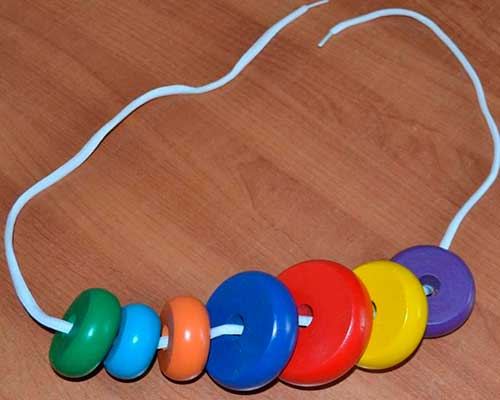
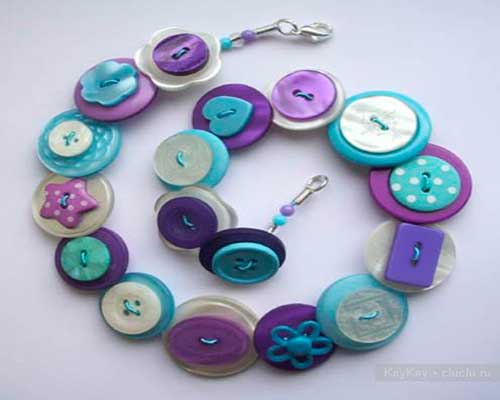

Moms know that very beautiful packages from children's toys, juices and other things fly into the trash. Sometimes you really want to keep the picture, but storing garbage in the house where the child lives is not hygienic and not practical. But if you cut out only an animal, a picture, then you get a small and very bright card that the baby can look at and learn new things. Ideally, if the picture has a caption that is drawn on it. For example, when cutting a juice box, try to capture the word apple if it is in the picture. This opportunity cannot be missed, so we take scissors and start cutting.
We cut out and put the cards in a box, and when enough accumulates, we strengthen them. The child does not yet understand that they cannot be torn, and if they get into water, porridge or soup, then they will deteriorate forever. Therefore, it is necessary to protect them from destructive actions. If you have a laminator at home, then wrap the cards in a laminating film. However, this is more of an exception than the rule. For the rest, there is another way to strengthen the cards. Take a wide tape and glue the card on both sides. Such protection is not the country's no action. If everything is done carefully and accurately, then the card can even be bathed.
It is better to store cards in a beautiful box that will encourage the child to look inside. In order to create it, you need to take the foundation. It's perfect for a shoebox. A shoebox is enough to store a huge number of cards. Try to decorate it with children's drawings, not only outside, but also inside. If you stick an animal on the inside of the cover, you can play hide and seek. The animal will appear and hide in the box. The kid will definitely like this game.
Try to hide all the toys in bright, beautiful boxes. This has a beneficial effect on the memory of the baby. He knows for sure that the cards are in a red box with an asterisk, and the pebbles are in a blue box with a fox.
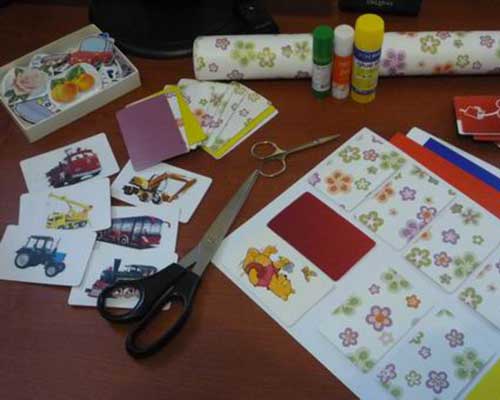

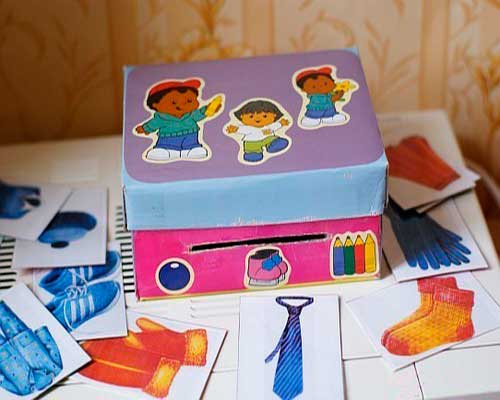
Another educational toy is pebbles. Ordinary stones collected in the sandbox can be incredibly useful at home. If you have the opportunity to collect river specimens with smooth surface, then be sure to take a walk on the river. This will make your work easier in the future.
To create a useful toy for a child, you will need gouache, clear nail polish and a little imagination. Using multi-colored gouache, draw various animals on the surface of the pebbles. If they are beyond your power and you are a so-so artist, then draw flowers, berries, snails, hearts, cars and vegetables. For those who are not friends with the brush at all, we can recommend plain pebbles with stripes, dots, dotted lines and zagagulins. For children who are already able to remember numbers and letters - write them. Use contrasting colors to make them eye-catching and memorable. Even if you don’t know how to draw at all and just paint them in different colors, this is already a huge plus for the development of the child.
So, let's say everything is clear with the picture. Painted the pebbles, applied everything they could. Now the image needs to be fixed so that it does not smudge or wash off, we use ordinary nail polish. Instead, you can cover it with any other - yahny, acrylic.
At first, your baby will be able to sort them out, then lay them out by color, and then voice the pictures.
To make it easier for him to remember numbers and letters, learn a few rhymes and accompany the pictures with funny jokes. So the child will remember not only the score and learn to read, but he will also tell the rhymes himself.
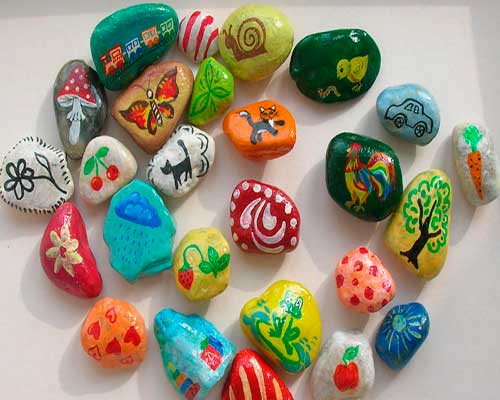


Create a racing, multi-level track
Creating a track on which a ball, a car or an egg from a Kinder will roll is a very exciting activity not only for kids, but also for their parents. Every child will want to ride and see with what intricate moves the ball jumps.
In order to create such a toy, you will need several boards, corners (depending on the number of tiers), scissors and glue. You can also use regular cardboard. As a base, you can use any board (you can find it after repairs in your apartment or ask a neighbor or relative for a small piece) or an empty box.
You should not make very high stands, the child should easily reach the upper tier and see what is happening there. Corners can be easily found in hardware stores, they are not expensive, weigh little and are easily cut with a knife or scissors. In addition, they are very light, which allows them to stick on liquid nails, moment or all-purpose glue.
The biggest difficulty lies in technical performance toys. It is necessary to calculate the slope, the distance between the beams, so that the rolling ball or the car does not fly out of the track. There is no specific calculation formula. Everything will have to be tested in practice. Choose two objects of different weights that you can roll and start experimenting. If the angle is greater than necessary, the machine will roll over and will no longer budge, and the balls will bounce and jump away from your child.
Many teachers and educators stubbornly talk about the benefits of educational toys. In fact, such entertainment is aimed at developing some kind of skill or skill in a child: fine motor skills, knowledge about colors, sizes, numbers, and so on. For each age, toys are selected individually, because what is interesting to a one-year-old child is unlikely to attract the attention of a five-year-old.
0-12 months
At this age, the baby is only aware of his abilities, so it is important to develop coordination, the ability to concentrate, and a grasping reflex. Toys should be bright, textured and light: beads, rattles, mobiles, rings, rag balls, developing mats - what a child needs up to 6 months old. For older children, you can find musical toys, sorters, nesting dolls, and so on. From 9 months you can offer glove and finger puppets, strollers, soft books, insert toys, cubes, and so on - they are aimed at developing motor, speech activity, as well as fine motor skills.
1-2 years
Now you can give your child toys that can be disassembled and assembled, by the age of one and a half, offer your child objects that can be generalized according to one attribute: color, size, and so on. By the age of two, you can play object games - building, story games, use various cards, pyramids, sorters, books, and so on.
2-3 years
It is time to develop not only fine motor skills, but also the ability to distinguish the world around. Developing toys for this age include crafts made from paper, natural materials, plasticine, story and subject games to test knowledge and skills, home-made cards that simulate situations.
3-5 years
All possible games for learning numbers, the alphabet, seasons, clocks, children's board games, puzzles, constructors, lotto, books, development boards and so on.
What improvised materials can be used?
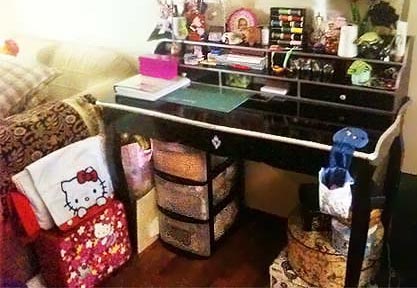
Dear needlewomen, do-it-yourself toys can be made from various materials: scraps of fabric, yarn, old clothes. Using a variety of accessories (velcro, large buttons, zippers, buttons, buckles, patches, and so on - the main thing is that the child cannot tear them off and put them in his mouth), candy wrappers, cereals, pasta, bells, foil, fillers like foam rubber or synthetic winterizer and other things.
Do-it-yourself developing cube: master class

To make such a cube, you will need: 6 equal squares of fabric of different colors, synthetic winterizer or foam rubber for filling, interlining, various accessories - buttons, ribbons, scraps of fabric, brooches, and so on, threads, a sewing machine.
From the fabric you need to cut 6 equal squares.

From interlining, it is necessary to cut squares 1.5 cm smaller than fabric ones. We apply them to the fabric and heat it with an iron so that the interlining sticks to the base.
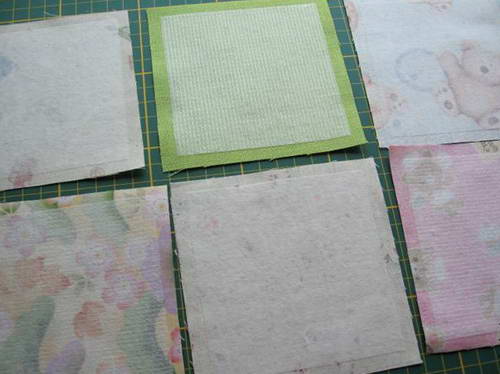
Each side of the future cube needs to be decorated: make an appliqué out of shreds, sew on beads, snakes, buttons, and so on. The easiest way is to draw a drawing with a disappearing marker, and then lay it out on the fabric. For example, like this.
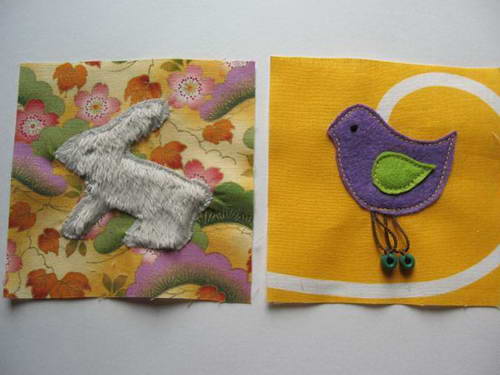
When the decorative part is finished, you need to sew 4 squares into one strip.

Then we sew two more squares.

All stitched seams must be fixed, you need to sew along the contour of the non-woven edges. We sew a scan: two faces need to be docked, and the allowance of the third is wrapped inward.

In the corner of the last edge, you need to leave a hole: turn the finished product inside out, stuff it with padding polyester and sew it up with a blind seam. You can also put a bell or rustling paper inside the square. The product is ready!

We sew a developing pillow: a master class
Educational toys - the concept is quite voluminous, they can also include a pillow, but not the usual one for sleeping, but decorated with voluminous applications and details - an excellent tool for developing fine motor skills. Pillow "Birdhouse" will be interesting for children of different ages.
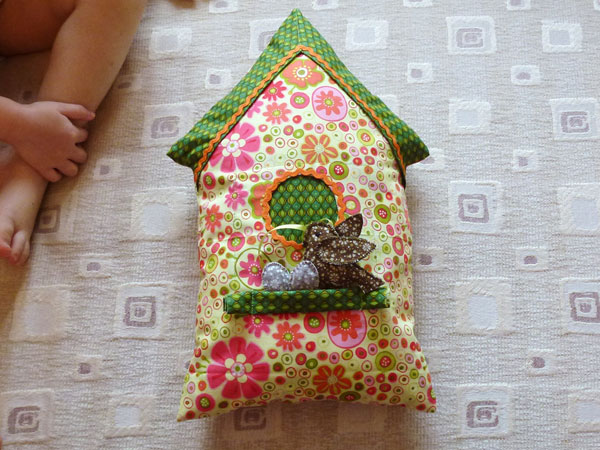
To create it, you need multi-colored shreds of fabric, interlining or soft material like teak, synthetic winterizer, braid, narrow ribbon, thread, needle. Optionally, you can sew on beads and buttons.
From teak we cut out the pillow itself in the form of a house (2 parts), sew it along the edge, leaving a small hole for stuffing.
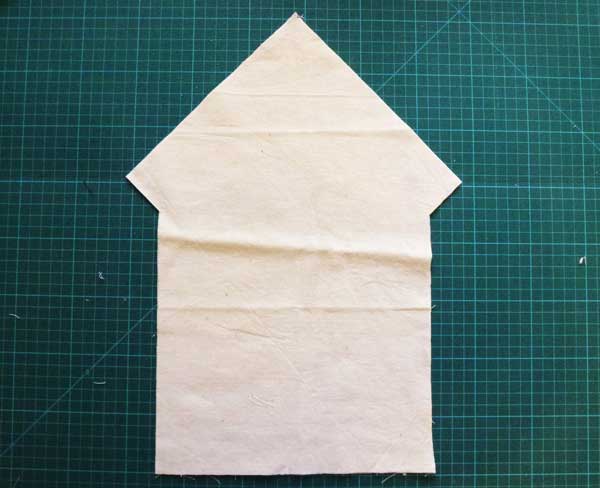
From a bright fabric we sew a pillowcase of the same shape.

From two rectangular flaps folded in half, we make a roof for the birdhouse, decorate it with braid.
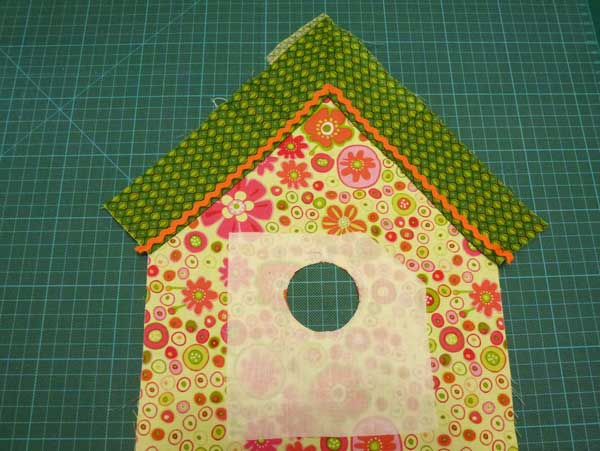
We cut a round hole in the frame of the house itself, sew the edges and decorate with braid.
Now you can sew a bird (2 parts for the calf, 4 parts for the wings), and you can also make eggs (two oval parts sewn together).
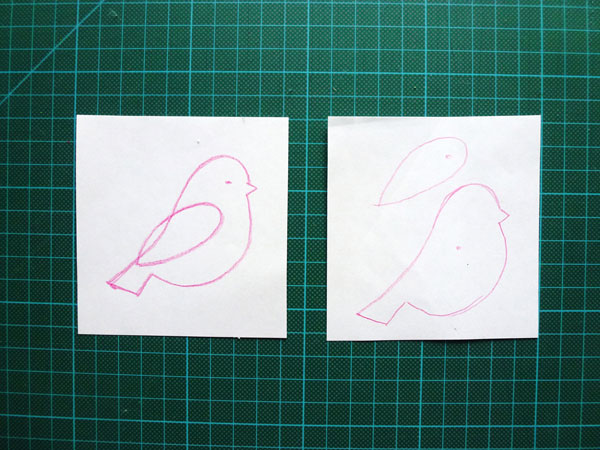
We use a synthetic winterizer as a filler, after which the hole in the body is sutured. We attach a ribbon to them, we attach the second end of the ribbon inside the birdhouse.
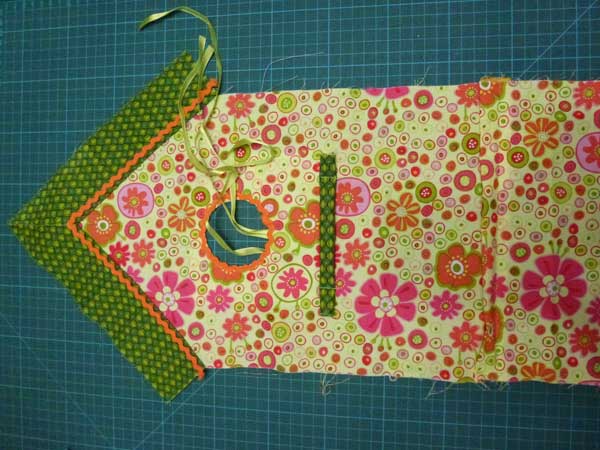
On the outside, we sew a pocket into which the “inhabitants” of the nest are placed.

The pillowcase can be sewn together or fastened with a zipper - then the cover can be washed. We put a stuffed pillow into the pillowcase, you can decorate it with appliqués and beads and start the game!
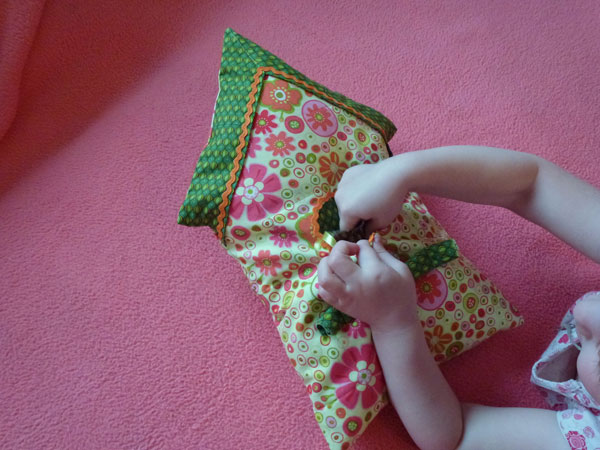
A few more options for developing pillows:
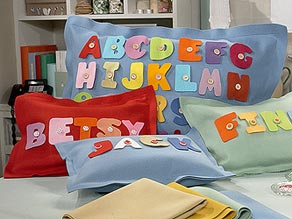
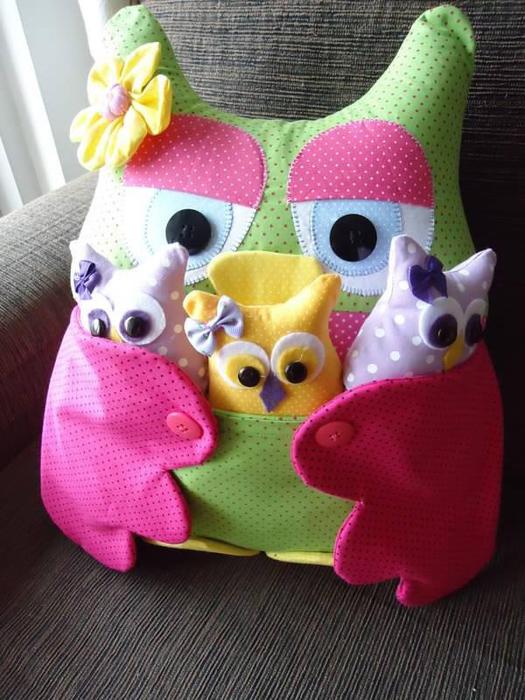
DIY lacing toys
In babies, the fingers are still very inept, so it is very difficult for them to perform precise movements and coordinate their actions. Fine motor skills are not only the development of certain areas of the brain, but also the preparation of the hand for drawing and writing. Lacing games are an excellent simulator that you can make yourself without any material costs.
The easiest way is to cut out a shoe-shaped figure from thick cardboard, make holes with a hole punch, arm yourself with suitable laces and offer your child new fun.

A more complex option is lacing toys in the form of animals or the so-called “sew-on” with prepared parts and holes: for example, a tree with leaves or a hedgehog with apples, or a cheerful sun with rays.



Developing mats for children of different ages
Choose a dense base for the rug: it can be a fabric with a padding polyester backing or an old baby blanket - then the child will not be cold to crawl on the floor. The background can be made both plain and from large pieces, it is easiest to put the fabric on an adhesive base - it will last longer. Each element - from the button to the trimming of the fabric, is attached carefully so that the child cannot tear them off. It is best to duplicate the buttons from the wrong side. Velcro, rattles, rings, bags with rustling paper inside, buttons and applications - all this is suitable for decoration. By the way, if you wish, you can also knit the rug - whoever is good for what, as they say.
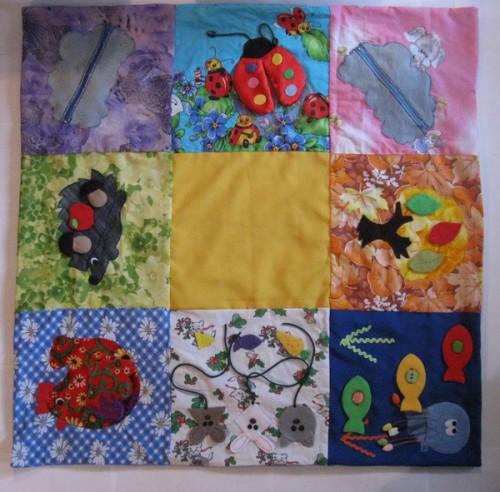
By the way, for older children, rugs can be themed: they can be decorated with animal figurines, numbers, letters of the alphabet, or even divided into 4 parts a la 4 seasons and decorated with snowflakes, leaves and other paraphernalia.
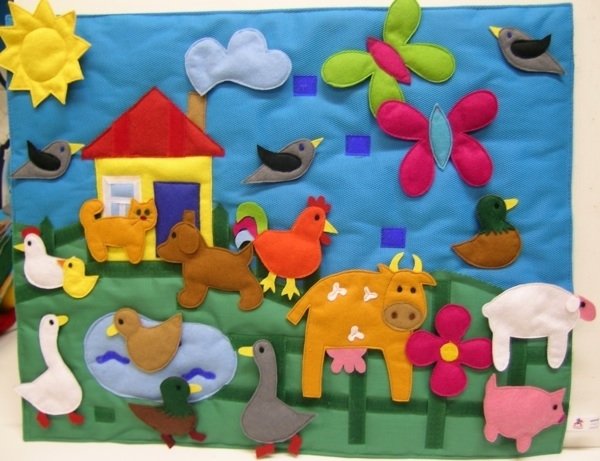
Enthusiastic moms – participants of flash mob games not only – took a fresh look at the placement of toys in the children's room, but also shared ideas for educational toys made by one's own hands.
There are sewn toys here, toys – panoramas and toys – collections, toys from matchboxes, jars and lids from baby food, carry-on toys, and board games. Many toys were made from improvised material. See for yourself.
DIY toys "Engine" and "Komodik"
Julia Alkhovik and daughter Alisa (1 year 11 months) made two toys out of matchboxes "Engine" and "Komodik" for the development of fine motor skills:
We got such a train from matchboxes pasted over with colored cardboard. Ribbons were threaded through the boxes. We study colors, inside we add small objects by color. Good motor training – open and close boxes.
And another matchbox toy – chest of drawers. We glued several boxes together, and the toy is ready.
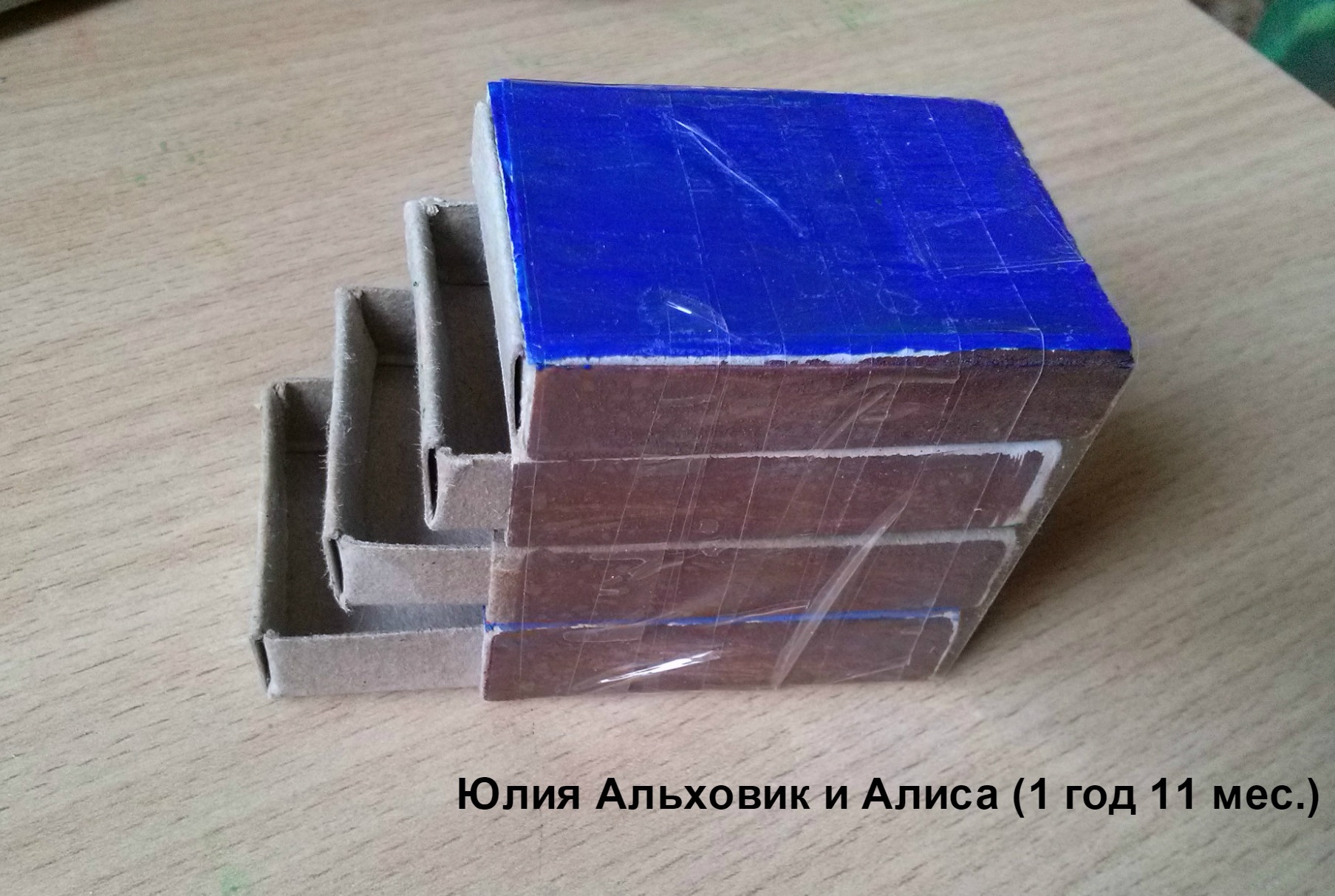
DIY toys "Tactile caps"
Julia Alkhovik also suggested sensory play"Tactile caps":
The game is made just from baby food lids. I glued various materials on the lids in two copies. At first they played, just looking, and found the same ones. When the daughter began to cope with ease, they complicated the task: they put it in a bag and began to pick up a couple there. Play became more interesting.

DIY toy "Parking"
Spirenkova Tatiana for son Alexei (2 years 1 month) made a toy "Parking" (intellectual development):
The car park is made of a shoebox and toilet paper rolls, decorated with cardboard, colored paper and a cone. Parking spaces allow you to learn the score from 1 to 5 and the colors. You can also stick the numbers on the cars and arrange them in the appropriate parking space or sort them by color.
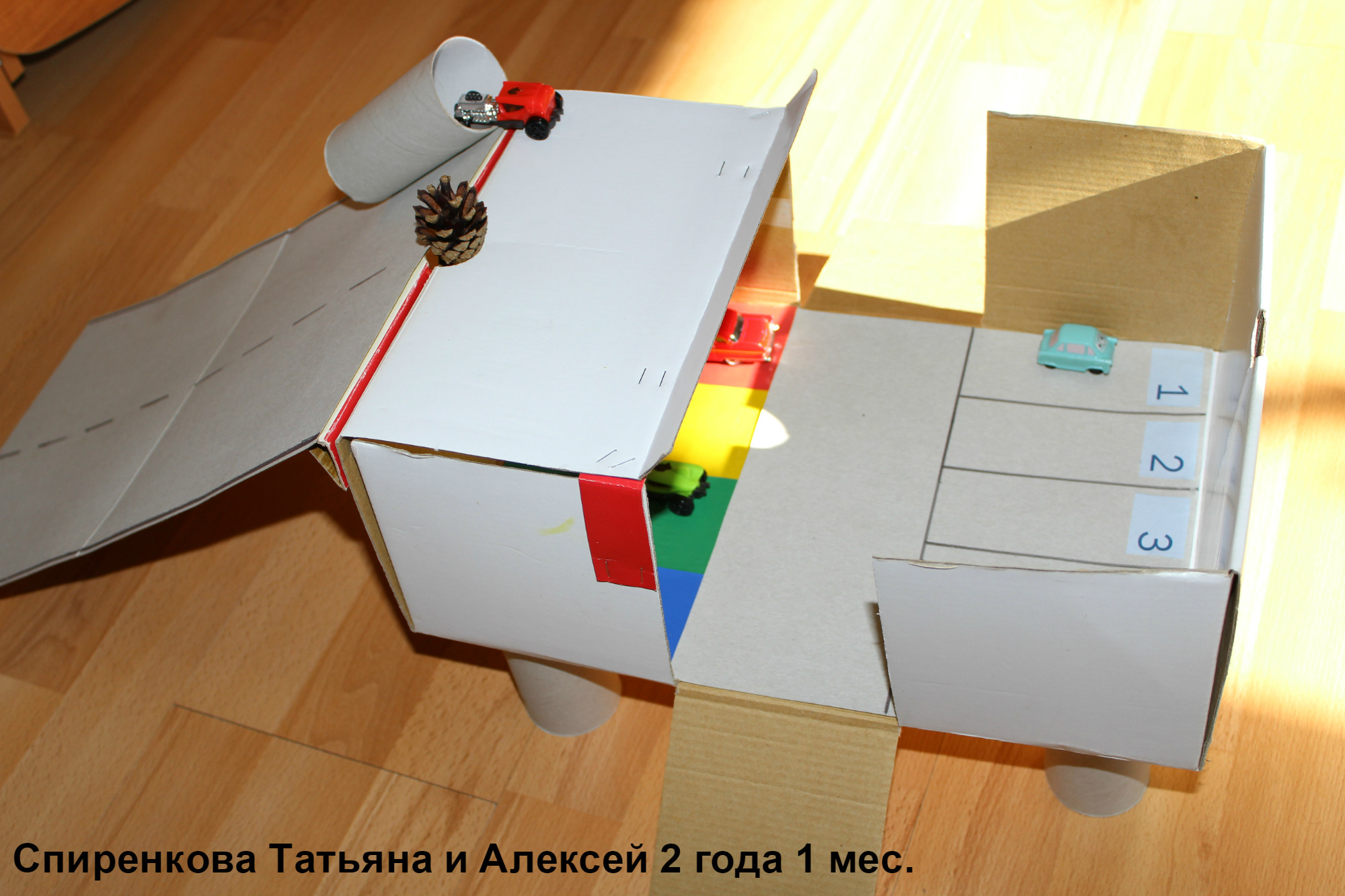
DIY toys: board games
Kobyakina Alena during geographical weeks, she came up with two board games for her son "On a plane over Africa" and "Antarctica"(intellectual development + physical development):
Game 1. "On a plane over Africa"
Would need:
- a map of Africa (divided into sectors (squares). We have a drawn map);
- model of a small plane;
- square leaves with drawn elements: rain, snow, sun, birds, hurricane. We lay them out on the playing field as we wish.
2 players play – pilot and dispatcher. Dispatcher task – fly the plane from point A to point B, giving instructions. For example, 3 cells to the north, 2 to the east, and so on. The pilot executes commands. If on the way he meets birds (card with the image of birds), then the pilot must wave his arms like wings. If we meet a hurricane, then we roll head over heels on the floor. Game elements can come up with different. This game is a lot of fun to play, plus we fix the cardinal points and memorize the names of countries and water bodies.
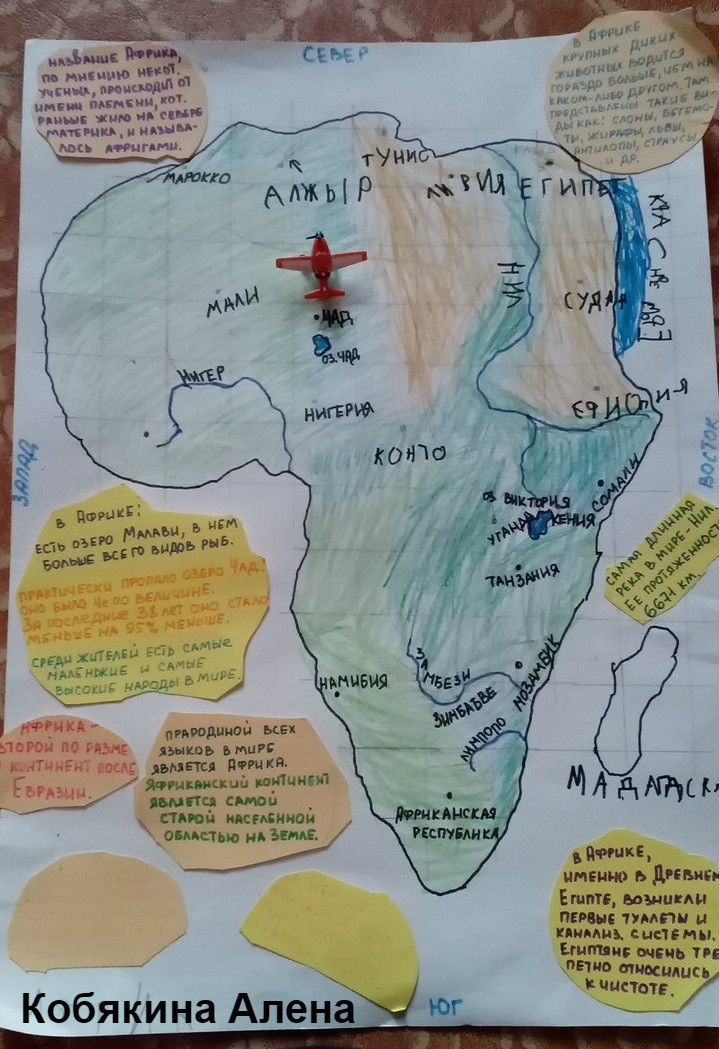
Game 2. "Antarctica"
When we had a map of Antarctica ready, my son said that we should also make a game out of it. And we came up with an ordinary walker with a cube. The map was also divided into sectors. Each sector was numbered, and marked where the "extra move", "skip move" field and the arrows for moving the player forward and down the route would be. The game is ready. We take a cube, chips and you can go on a trip to Antarctica.
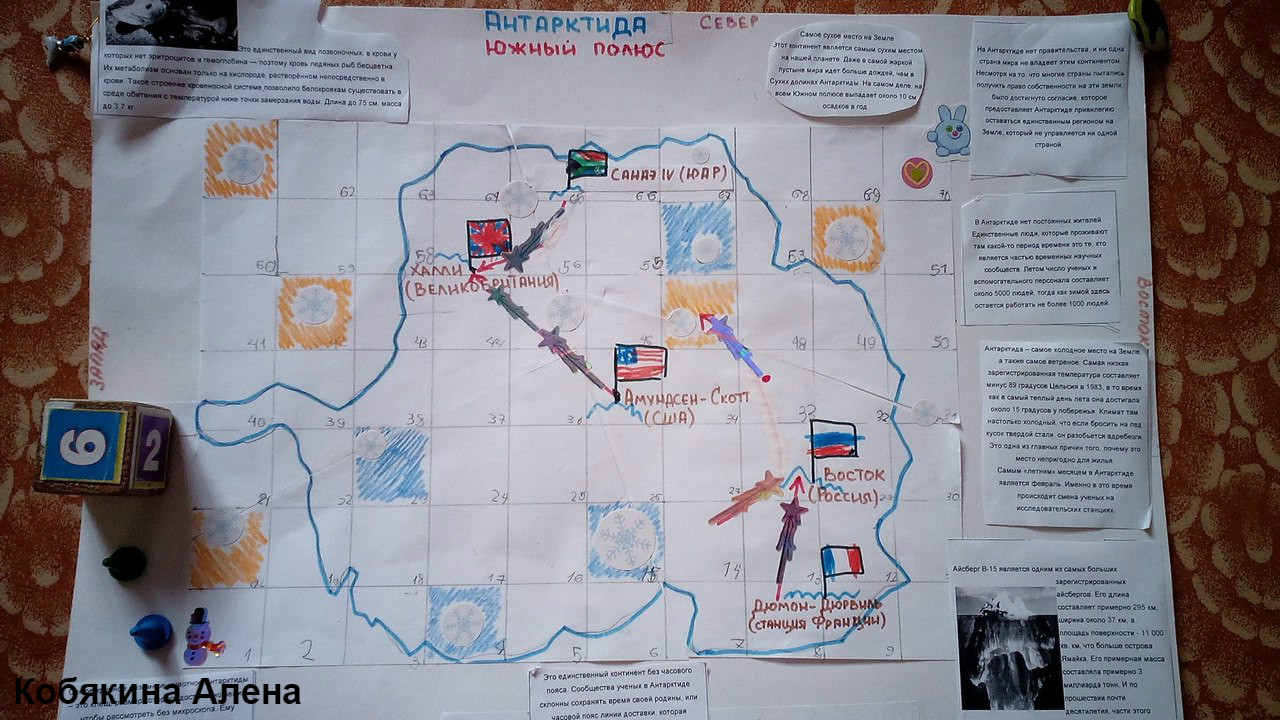
DIY toy "North Box"
Vilyavina Tatiana shared the idea of making "Northern box" for thematic lesson"Reindeer":
At the core cardboard box, cotton wool, cardboard. We did it together with my son, he painted the northern lights, painted Oleshki and dogs, glued cotton wool. Children are very fond of playing with the "northern box".
Another idea from Vilyavina Tatiana – vegetables from egg boxes (papier-mâché) were made in preparation for the Cucumber Day:

DIY toys for intellectual development
Anna Semennikova found a use for accumulated baby food jars – made two games for intellectual development: "Number Jars" for son Rusik (almost 4 years old) and "Colored Jars" for daughters Margarita (1.5 years):
Rusik and I are learning counting and number composition. He knows the numbers well, but we have a little trouble with the score. So that's what the dots were for. Game options: find a suitable lid, by dots, by numbers, put the appropriate number of items into jars.
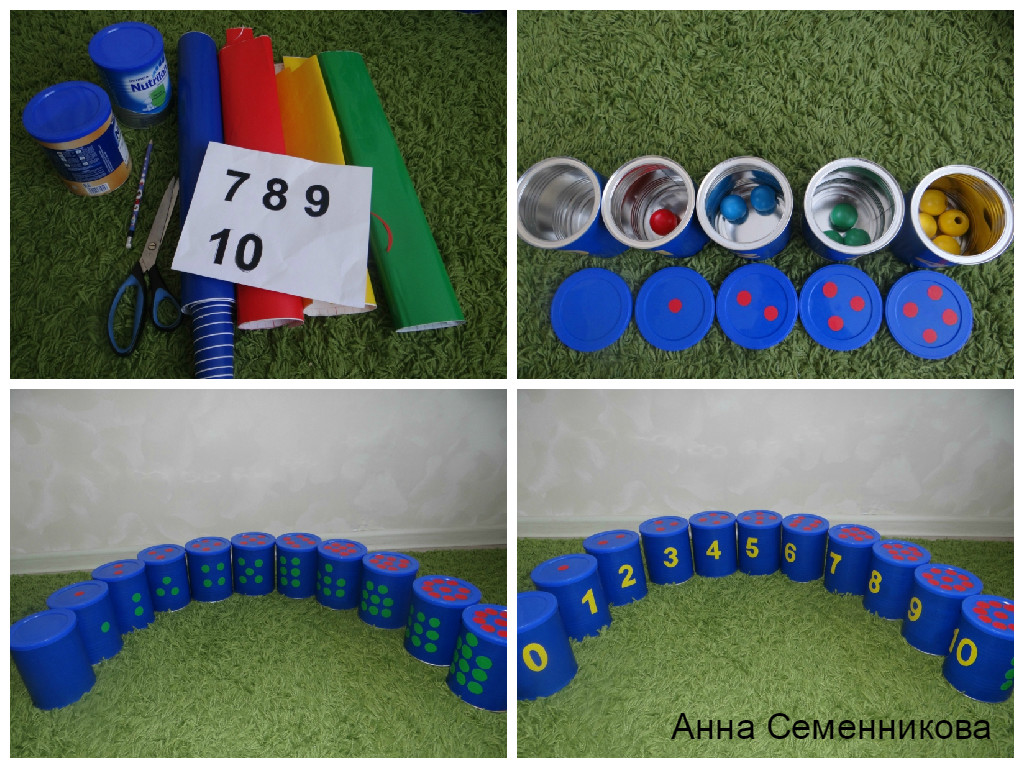
Game options for "Colored jars": Find the same jar, find lids for jars, arrange items in a jar of the corresponding color.
The plans are to make sensory boxes out of jars. Put different objects of the same color in them and cover them with rice of the corresponding color.
Also from jars it turns out an interesting designer.

DIY toys: magnetic geometric constructor
For disposal of self-adhesive film residues Anna Semennikova proposes to do magnetic geometric constructor:
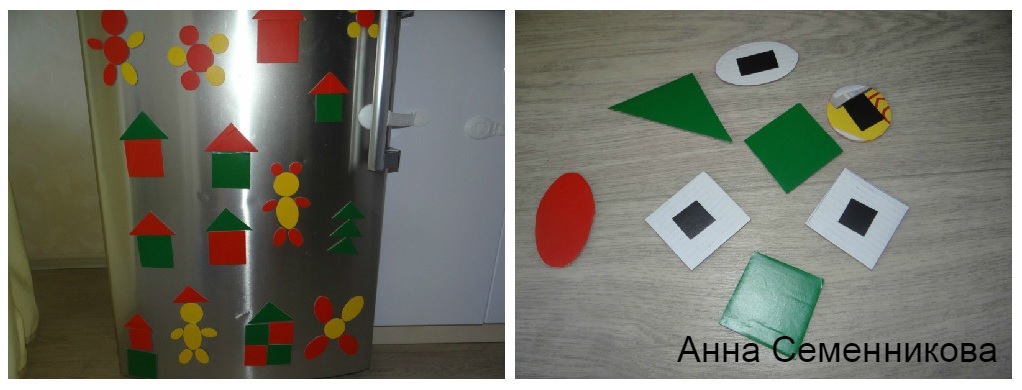
DIY toy "Mathematical walker"
Svetlana and Gleb (5 years old) Melnikovs playing homemade game at home "Math Walker"(intellectual development):
Game idea: in game form repeat and consolidate counting skills, as well as spatial orientation skills (up, down, right, left).
Materials for creating a game:
- a large sheet of cardboard;
- markers, colored paper, scissors and adhesive tape for decoration;
- 4 toilet paper rolls (depending on the expected number of players);
- acrylic paints;
- yogurt bottle caps for chips;
- digital chips, a small jam bucket for chips.
Game making:
1. on a large sheet of cardboard we draw into cells and decorate the playing field with felt-tip pens (the size of each cell – 5 x 5 cm, according to the diameter of the sleeve). I got a playing field of 6 x 8 cells;
2. coloring acrylic paints in different colors of the sleeve, draw a “face” on each player;
3. To create digital chips, you need to circle circles on colored paper in accordance with the diameter of the covers. Then draw with a felt-tip pen on each paper circle a number and an arrow with the direction of movement (up, down, right, left). When determining the number of numbers, it is necessary to proceed from the number of caps available, as well as the maximum number of cells on the playing field.
AT this case I managed to make 6 digits (the maximum could be 8) and for each digit one of the four arrows – there are 24 chips in total. Then we cut out the circles, stick them on the lids and fasten them on top for reliability with a strip of narrow adhesive tape. We put the chips in a bucket and you can start playing.
The essence of the game. Each player chooses a character – sleeve, set them in the middle at the base of any side playing field. Task: be the first to reach the upper opposite row of the playing field.
Players take turns drawing digital chips from the bucket and move their characters along the cells according to the symbols on the chip (for example, 2 cells to the right, 4 cells up, and so on.). During the game, the child (at first with the help of an adult) must say the number and direction of movement depicted on the chip, and then make the correct move himself.
If chips with arrows pointing to an impossible direction of movement fall out (if the player character is standing on the extreme rows), then another chip is drawn. If a large number falls out, and the number of moves in the desired direction is limited, then you can continue to move to the side.
Our experience. On the very first evening before going to bed, my son and I tried to play our math walker - it was interesting (both to my son and to me), numbers and spatial concepts are perfectly pronounced and wonderfully remembered.
My son really liked the funny characters, they are very convenient to hold and move. My child also got into such excitement, he wanted to win so much, he was sincerely upset when he had to go down. But the son eventually won and deservedly received a prize - a set of stickers!

Tired of the mess in the nursery? Tired of endlessly collecting toys for the child?
DIY toys: educational blocks
Oksana Delnova made for daughters Vasilisa (1 year 1 month) two developing cube(fine motor skills):
Soft developing cube. Sides of the cube:
- Ladybug with a zipper, unfasten, and there is a key on a ribbon, black dots - buttons for fingers, eyes move (bought in a store for creativity).
- Side with buttons – touch, chew, a button is also hidden under the leaf. On them with flowers you can work out a little.
- A dog lives behind the Velcro door. We unhook the door, stick it, answer the questions: who is it? how does it bark? and so on.
- A phone is hidden in a Velcro pocket – gnaw, chew.
- Beads of different sizes, we feel, try to tear off and chew.
At first I did each side separately, then I sewed all the details together, inside in packages from shoe covers, cereals and coins for sound. Loops and ribbons are sewn everywhere.
Cube with a hole for the handle. I glued the usual box with cardboard, sewed on the buttons from thick cardboard covered with velvet paper, geometric figures. We store inside prickly balls, food caps, cloths. We take out the contents and put them back.

DIY toys: clothes walker and walruses
Anna Usova suggested Walking game "Clothes" to develop attention
Various elements of clothing are depicted on the field. We start playing from the bottom left cell. I dictate the sequence of actions to the child, and he must follow where we are moving and, when I stop, say where we are.
Another one homemade toy Anna Usova for sons Gleb (7 years old) and Ignat (2 years 9 months) – walruses:
Once Gleb, coming from the kindergarten, told us a story about sock-eaters. They eat one sock, and the second remains. Then he tidied up the drawer with his socks and found single socks there. “Sockeaters have been here,” the son concluded. After a little thought, Gleb figured out what to do with single socks - we made walruses out of them. We have 2 of them - each son has his own.

DIY toy: "Put rubber bands on your fingers"
Elena Fedorova offered a game "Put rubber bands on your fingers"(fine motor skills). There can be many options for the location of rubber bands on the fingers.

DIY toys for learning colors
Alexandra Biyanova invented for my Alina's daughters (2 years 1 month) two color discrimination games:
"Mermaid". Need a pocket with a picture and color cards. I glued strips of cardboard on the sides and bottom. I pasted the printed picture on thin cardboard from a cookie box. In the drawing, I made a cut in place of the tail of the Little Mermaid. Nearby I made a pocket for multi-colored cards. You can play: change cards, learn colors, dress up the Little Mermaid.
Sort by color. I glued pieces of colored paper into a box with dividers. Let's sort the fish – Mermaid friends. Offer them cakes – magnets, each fish has a cake of its own color.

DIY toys: magnetic cards
Julia Duryagina gave me an idea how to do it magnetic cards:
You will need the cheapest plastic transparent magnets in which pictures can be changed. We prepare cards with pictures of the size you need, insert – and done!
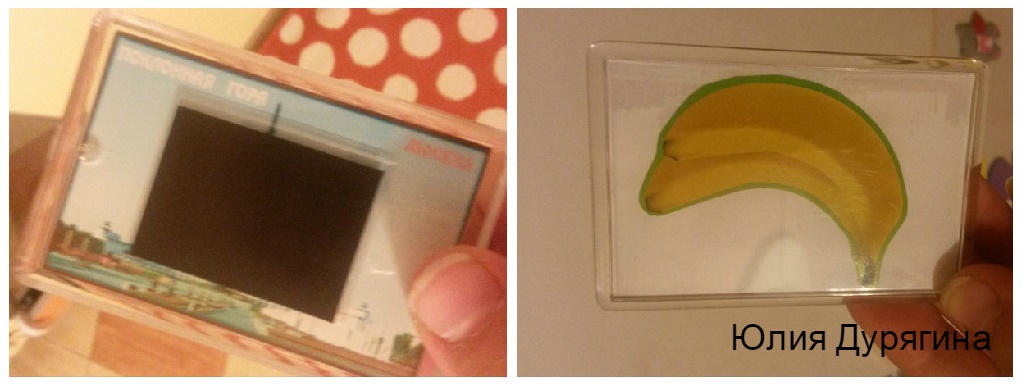
More ideas from Julia Duryagina:
You can teach a girl how to handle a needle on a hoop with a burlap-type fabric and a large plastic needle (sold in sewing departments). On the fabric, you can mark the points with a marker where to stick the needle.
Fine motor skills can be developed with the help of this game: put circles from an absorbent thick bath rug into large iron lids, mark dots on them with a marker and stick stationery needles with a bitten point.
From a large box you can make a screen for a puppet theater.
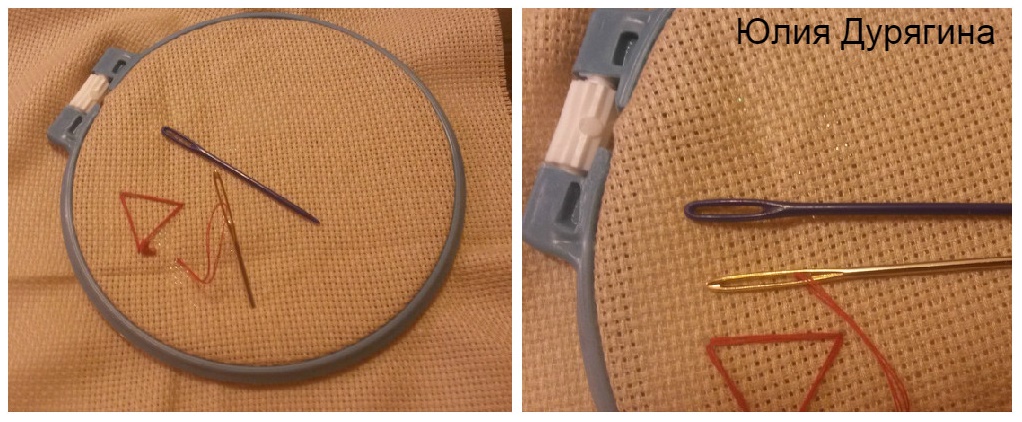
DIY toy: "Fire truck"
Anastasia Trofimova made a toy "Fire engine" for his three-year-old son, who asked “to make such a fire truck that you could carry with you everywhere, but so that it was not very small, the doors would open, firefighters could be put in it and a ladder could be placed.”
I made a folding car that was not only a toy, but also developed fine motor skills. I made the machine itself from a velvet film, laying an ordinary household napkin inside for density and sewing.
The inside of the machine only has credit card pieces sewn in on one side, so they can be lifted up and the machine folded flat, or lowered and the machine becomes voluminous. The headlights, siren and ladder mount are Velcro to keep the machine in place when folded. The ladder is a tool for training lacing, that is, in order for firefighters to have a ladder, it must be “pushed out” - thread the lace.
The wheels of the car are also made of credit cards covered with velvet. The wheels are attached to the buttons, they can be removed, carried out "tire fitting", at the same time training to fasten and unfasten the buttons.
The fire hose is attached to a button inside the car, it must be rolled up and then hung on a hook on the side of the car. In the cockpit, a diaper strip is made, to which figurines of firefighters are easily attached with Velcro from diapers.
The machine is very pleasant to the touch due to the velvet base, when playing the wheels spin both folded and unfolded, the doors open and close with Velcro. Also, it's easy to wash in the machine.
After a while, my son and I made a fire department together. We chose a suitable shoe box, sealed the name and pictures with red paper, put a floor divider, cut a hole for a pole through which firefighters descend. The son said that there should be a control room in the fire station, so a telephone appeared, there should be a recreation area - a table with chairs, and a bedroom - shelves. To climb to the second floor, the son glued a ladder out of tubes, and made a pole out of them for a quick descent on alarm. And the fire truck took pride of place in the garage on the ground floor.

DIY Toys: Treasure Box and Nests
Olga Duk helped son (5 years old) collect and place in the candy box his first treasure collection:
Now we are reading a book about Moomin-Trolls, in which there is one hero, Hemulen, who collects everything. My son (5 years old) really asked me to make some kind of collection. I kept a box of sweets for a long time, and now the box came in handy. This will be our first treasure collection. Tried to play with my son finders. For example, what lies in the second row, third from the right? What is in the third row, second from the left? Practiced rows, left / right. And also got acquainted with the concept of a row and a column.
In order to introduce daughter (1 year 7 months) with quantity, with numbers Olga Duk made a game "Nests»:
Needed an egg container and balls. Container cells – these are nests, balls – bird eggs. It was necessary to fold the eggs of the birds in accordance with the numbers near the cells (nests). I told stories about birds, they looked where there were more eggs, and some nests were completely empty. It was interesting.

DIY toys "Where is whose house" and logic covers
Ekaterina Akimova for daughter Nastya made a game "Find a house, or who lives where"(intellectual development + fine motor skills).
To create this game, we needed matchboxes, self-adhesive paper, stickers with images of animals / insects / birds and their dwellings.
I glued the matchboxes with self-adhesive paper and pasted a picture with a house on top. Inside the box pasted an image of an animal / insect / bird.
Child task – choose each his house. This game also develops fine motor skills (the baby needs to insert the inner tray into the matchbox). Daughter herself came up with another way to play – building a tower.

Another homemade game that is played Ekaterina Akimova with daughter, – this is a game with baby food caps:
What is necessary:
- baby food lids;
- stickers with pictures or pictures;
- scotch.
Lots of game options:
- pick up a couple (mom – baby);
- find the object made by the mother according to its description (“Small, yellowish, says: “Pee-wee!”);
- divide objects into groups (living – inanimate, edible – inedible);
- put in front of baby 3 – 5 caps (depending on age); ask to remember pick up one cover until the baby sees; ask what has disappeared, or, conversely, add another one;
- make up a story according to the caps laid out in front of the child.
"A Child Development System at Home from A to Z". You can do it too!Do you have handmade toys? Share in the comments!
If you think that making toys from improvised means is the lot of those who are not able to buy all the best for their child, you are deeply mistaken! DIY toys from improvised materials are a great way to awaken even the smallest children's interest in designing, which means helping to develop mental activity in toddlers. When a child sees an ordinary object suddenly turn into an exciting toy, you look like a real magician, endowing a seemingly completely unsuitable thing with a new meaning.
You can play with anything. There are many universal ways turn simple household gizmos and "household trash" into something useful and exciting. Do not rush to get rid of the released bottles-boxes, because they can serve you well. You can learn how to make toys from improvised materials by reading this material.
What toys can be made from small boxes
This section of the article is devoted to what toys can be made from shoe boxes, candy, milk, pizza, etc.
Box is an object that can be anything. They are easy to paste over or paint, and then turn them into the most different toys. Below are a few options, although in fact there are many more.
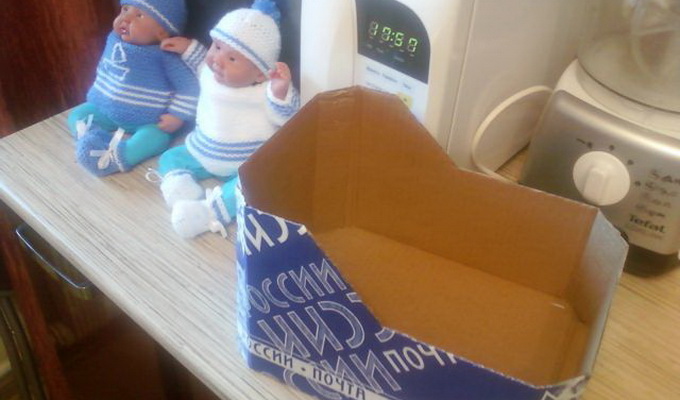
Bed for a doll- put a mattress and a pillow made of pieces of fabric on the bottom of the box and cradle the cribs.

Machine (trolley)- make a hole in the end of the box and tie a string. The kid will "carry" his important "loads" in this toy from a small box.

Garage for cars- cut a part of the side wall of the box so that you get a door, turn the box upside down. Now small cars will have their own "house".

small house- take bags of milk, kefir, juice (don't forget to wash thoroughly from the remnants of the contents!) etc. You can even build a whole city, you just need to draw or glue windows and doors. And you can make “skyscrapers” toys from improvised materials if you put packages on top of each other.

Cubes- from the same packages you can make light cubes and use them in "building" games.
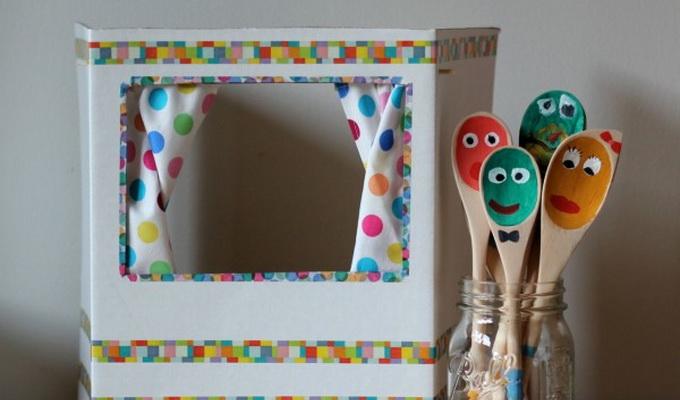
Puppet show- take a pizza box, open it completely. To make such a toy from improvised materials with your own hands, cut opening “windows” with curtains from pieces of fabric in the resulting screen. Now you can act out performances or simply raise any toy above the “screen” and talk to the baby in a “toy” voice.
How and what toys can be made from plastic bottles
You already know that plastic cups help in games. How to make toys out of plastic bottles(washed and dried)? A small note: if you need to cut a hole in the bottle or cut it into pieces, treat the edges with tape so that the baby does not cut himself. And you can iron the edges through the paper with a hot iron, they will easily melt and become smooth.
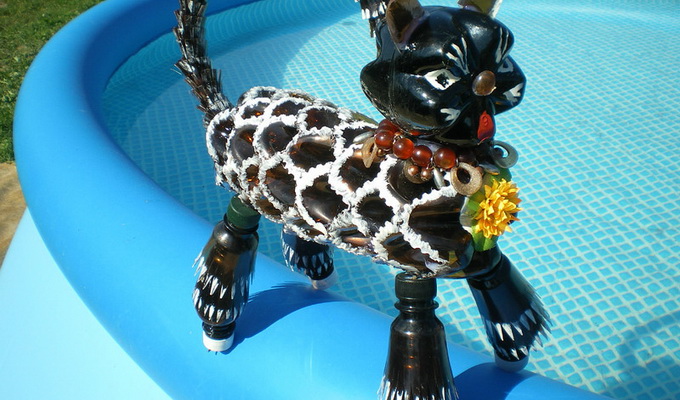
animal toys- the most diverse! Usually the bottle serves as a “torso”, toilet paper rolls will completely replace the “limbs”, and the “muzzle” can be drawn and glued. By the way, you can paint such handmade bottle toys in any color.
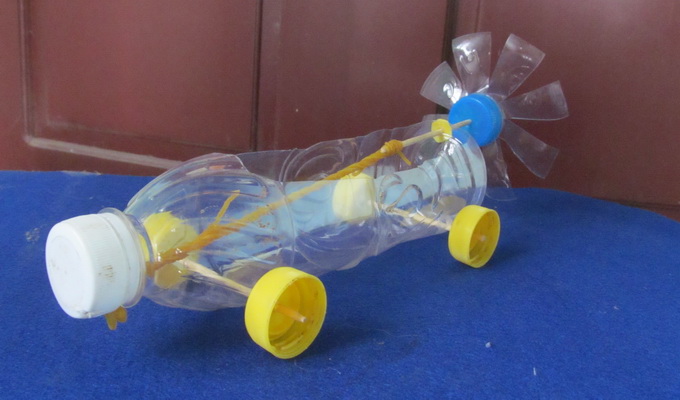
Transport- not only the machine, of course. You can make for children from improvised material both a toy plane and a rocket. Add the necessary “details” (wheels, tail, wings can be cut out of cardboard and attached with tape).
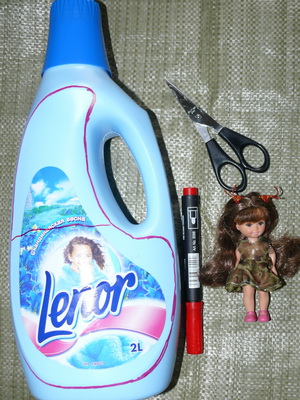
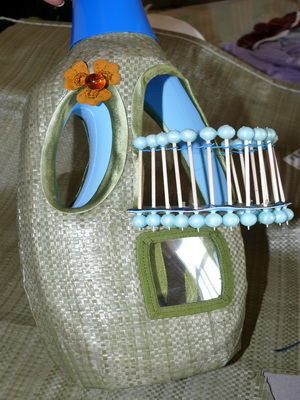
Fairy house- housing for small dolls. Well suited plastic bottles of an unusual shape - from under the bath foam, from under the shampoo, as well as white opaque bottles. Cut out the “door”, decorate the walls (you can paint with paints, stick sparkles, beads). Place matchbox furniture inside the house.


Robot: the body is a two-liter bottle, legs and arms are half-liter bottles, the head can be made from some rounded plastic jar. Fasten it with adhesive tape, “paint” the face with paints - the robot is ready.

Catamaran ship- for two bottles, cut out part of the wall, these will be the “seating places” for the dolls. Fasten the bottles with tape or tape (the holes should be on top). Attach a sail pole between the bottles. Now you can send such a toy made of plastic bottles, made by yourself, for swimming.

Raft- on rafts from plastic bottles, some adults even manage to build islands and dwellings, this plastic container has such good buoyancy. The main thing in the construction of such a raft is that the bottles must be tightly closed and well fastened together. If you make two layers of bottles, buoyancy will increase, and the "area" of the raft depends on the number of bottles: the more there are, the more "load-bearing" the raft is.

feeder- cut out a part of the side wall from a large bottle, attach a rope to the twisted cap so that the feeder can be hung. Pour the food and hang it somewhere in the park. And you can install a feeder in front of the window and watch the "feathered guests". Just remember to feed regularly.
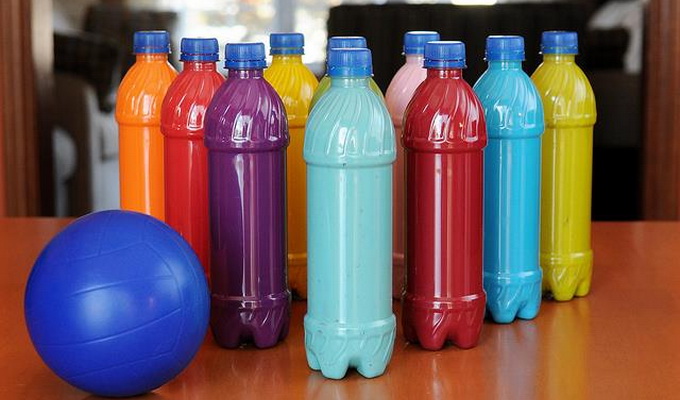
Bowling alley- empty bottles will completely replace skittles for the game. Such children's toys from improvised materials can be knocked down with a ball, as in a real bowling alley, rolling the ball on the ground.

Target- and in winter you can also arrange a competition for accuracy, who will bring down the bottles more by throwing snowballs at them.
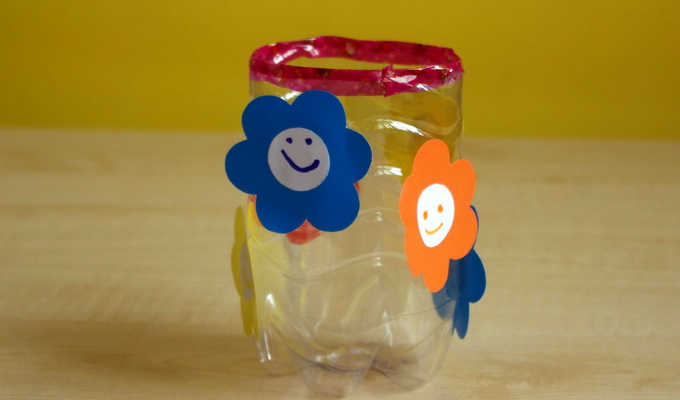
Vase, pencil holder- from the bottom of the bottles you can make vases, or pencil boxes, or containers for small things. You just need to decorate them, paint them or make an appliqué out of paper, beads, pebbles, pieces of fabric - the child can handle the decor himself.

Bilbock- the simplest toy in manufacturing, developing dexterity and coordination. From a large plastic bottle, cut off the top to make a “cup”, insert the end of a rope or cord about 40 cm long into the neck and tighten the lid tightly. To make such an educational toy from improvised materials, insert the other end of the rope into a small plastic case from under shoe covers or a kinder surprise and close it tightly. Now toss the "ball" and try to catch it with the "cup". You can play in turn, each hit is a point. Agree on how many points you play. Whoever scores the required number of hits first wins.


Matryoshkas- cut several bottles of different sizes in half (for example, two-liter, one-and-a-half-liter, one-liter and half-liter), take only the upper parts. They should be easy to put one on top of the other. Paint the “faces” of the nesting dolls with acrylic paints.

Ded Moroz and Snegurochka- from small opaque white bottles (0.5 ml, 0.3 ml or 0.2 ml from children's dairy products) you can make fairy tale characters. “Put” paper coats on such toys made with improvised means, draw or glue faces, a beard, a pigtail.

Sea in a bottle- a home-made sea can be made from a transparent small smooth bottle, for example, from mineral water. Fill the bottle with about half the water, add a drop of blue food coloring and mix well. Collect a handful of small beautiful pebbles, shells, starfish and other "marine" little things, pour them into a bottle. If there is, add a little glitter. Now the most difficult thing is to carefully, slowly add any vegetable oil to the very top. Screw the bottle tightly and put it on its side - the sea is ready. Water does not mix with oil, so the border of the "sea" and the "bottom" with shells and pebbles will be clearly visible. And if you move the bottle a little, you get waves, and then you can see the "storm on the sea."
Now you know what toys can be made from a bottle, and what plastic caps are useful for?
What toys can you make with your own hands from plastic bottle caps
The first thing that comes to mind is to make wheels for homemade cars out of wheel covers. But this is just one of the ideas! Plastic bottle caps of different sizes and colors are used for countless interesting crafts and games, which is why many mothers collect them.
If there are a lot of caps, you can:
- sort them by color, size;
- give the child a couple of empty bottles with different necks, let him pick up suitable caps for each;
- count, compare, which are more, which are less;
- lay out the path, starting with large covers and ending with very small ones, and “drive” the baby dolls along the path, “drive” the little cars.
Labyrinth - you can lay out a small labyrinth from the lids and guide a small car, trying not to touch or move any of the lids.
Ski Track- turn the labyrinth into a ski track. Give the baby "skier" equipment - two caps. Let him put his index and middle fingers in the inverted covers and, moving his fingers, as if with his feet on skis, will go through the track. It is impossible to shoot down other covers, otherwise the baby will go out of the race!

Spider bugs. To make such a toy, draw black dots and antennae eyes on the red cover - here you have a ladybug. You can also decorate other covers with bugs, spiders, bees.

Refrigerator magnets- paint the covers with funny faces, muzzles of animals or write letters, numbers. Attach a magnet inside (using plasticine) - and act out performances on the refrigerator stage. Or, while you are preparing dinner, the baby will learn to read and count by laying out “lid” letters and examples.
Projectiles- Arrange competitions for the accuracy of getting lids into a small plastic container. Who will make the most successful throws from one meter? What about two or three?
"Let's blow"- the lid can play the role of a ball or a puck in an "air match" - blow it with a juice or cocktail tube into the "gate". Such a do-it-yourself toy made of lids can also be simply “blowed” on the table to each other - this good exercise for ventilation of the lungs and development of breathing.
Walls, towers, pyramids - walls, towers, pyramids can be built from covers of different sizes. If there is a lot of “building material”, give a task related to certain color(for example, to build a "blue tower") or size (for example, to assemble a pyramid of three large, four medium and five small caps). Such educational toys, made with your own hands from improvised materials, perfectly train fine motor skills.
Bulldozer- using a toy truck, or a scoop (shovel), or even just a flat cardboard box, quickly collect all the caps in a box. The game can be played "for a while", when you need to collect a lot small toys, including removing the caps in place.

spinning top- you can make a simple top from a lid and a toothpick. Make a hole in the middle of the plastic lid so you can insert a toothpick. Just make sure that the hole is not wide, otherwise the toothpick will not hold and fall out. Insert a toothpick so that its small tip “peeps out” from the flat (outer) side of the lid, and the long one is from the inside. Now put the top on the small tip and spin it with your fingers. long part toothpicks. To make this plastic lid toy spin long and smoothly, experiment with the length of the "leg" on which the toy spins.
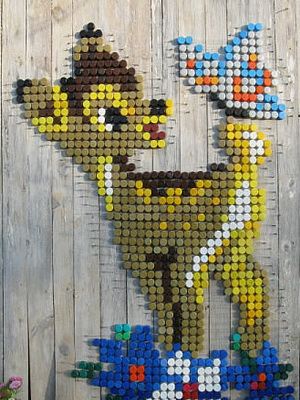

Laying out the figures- from covers on a flat surface you can lay out a variety of shapes. For example, geometric or silhouettes of animals, transport. It turns out very unusual and interesting, a kind of mosaic of covers.

Painting (mosaic, panel)- if you liked the patterns laid out from the covers and want to keep them, glue the “picture” on a thick sheet of cardboard. Such a mosaic toy for children, made by hand from improvised materials, looks very good and delights not only the child.
![]()
Tic-tac-toe- the rules are the same, but instead of drawing tic-tac-toe, caps of two colors are used. And you can even play on a checkered tablecloth.
"Remember"- lay out several different covers, let the child remember the location, color, size. Then ask the baby to turn away and change something: remove, move or add some covers. The task is to make it "as it was." Such an educational toy made of lids perfectly trains visual memory.
"Find differences"- lay out the covers in two identical rows and make one or two differences (by color or size). Let the kid determine how the rows of caps differ. For very young children, start with three or four caps in a row; for older children, you can lay out not only rows, but also supposedly “same” patterns, pictures. In this case, playing with such a plastic bottle cap toy will be more difficult, but also more interesting.
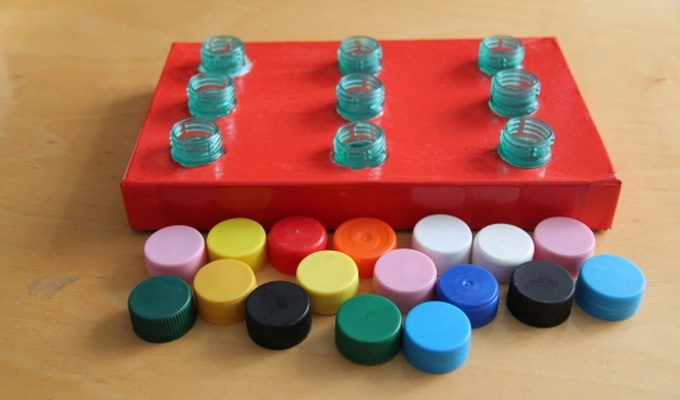
"Small and Big"- ask the child to lay out several large and several small lids - the amount depends on his age. You can lay out in a row, you can scatter. Give your child a box or jar with the rest of the lids unlined. Now turn on the stopwatch! On command, the child must find other lids that are suitable in size in the box: cover the small ones with the large ones, and put the small ones on the large ones. How many seconds did it take to complete the eye, attention, and coordination task?
Below is a description of what else you can make toys with your own hands.
DIY toys from improvised means at home
Remember how in childhood you sometimes wanted to climb into your own house. Below are the options for a “home” in which your baby will play with dolls or soldiers, arrange “darkness” (subconsciously relieving himself of many fears), and just be able to be alone with his thoughts for a minute, relax, dream and even sleep, if tired. For such a rest in the "house" lay an old blanket or a thick blanket, a bedspread on the floor.
The easiest option for such a homemade toy is to throw an old sheet or blanket on the table so that the fabric reaches the floor. But this is not always convenient, since the table is usually used frequently.
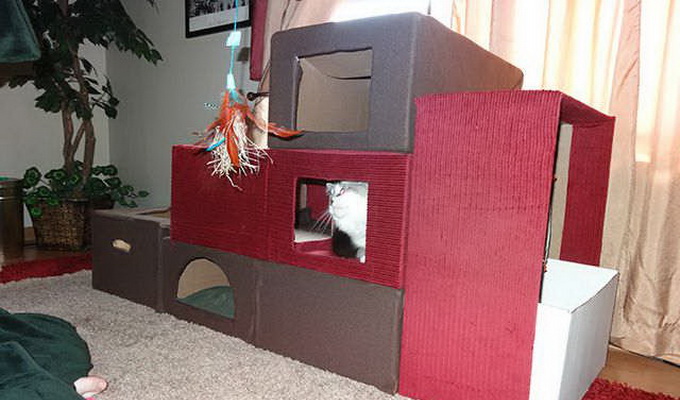
Another option is a cardboard box from under some large household appliance, equipment. You can cut through “windows” in it, make a “door”, decorate the walls with drawings. Just remember to reinforce the corners and joints of the box so that it does not inadvertently fold and fall on the child.
If there is no box of a suitable size, you can make such a children's toy with your own hands from scrap materials such as pieces of cardboard, firmly fixing them with adhesive tape and PVA glue. And by bending a large sheet of cardboard in half and placing it on the floor with the fold up, you can get a cozy "hut". Just strengthen the walls so that they do not "part".
Another "budget" version of a toy made from improvised means is to throw a blanket over the back of a chair with one edge, and with the other, for example, on the armrest of a sofa. For a baby, even the narrowest space will seem cozy, because this is his “real house”.
You can use an ordinary stepladder, putting it in working condition and covering it with any cloth, the same sheet. The stepladder is good because it has ready-made "shelves" for toys - steps.
What else can you make toys with your own hands?
The “soft” option is a “house” made of a large piece of rectangular foam rubber or a propylene tourist rug. Only foam rubber is desirable to be sheathed with a fabric cover. Bend the foam rubber in the form of an arc, that's the "house". To prevent the "dwelling" from straightening, attach the "walls" to the "floor".
If dad makes a frame of four light aluminum tubes of sufficient length, fastens all four tops together, and sets the legs firmly on the floor or on a base of the same aluminum tubes, you will get the “skeleton” of an Indian wigwam or northern yaranga. Mom will only have to make walls with the help of fabric. By the way, the frame can be made from tightly rolled and glued old newspapers! However, if dad is a master, he can make a wooden frame from processed blocks or planks.
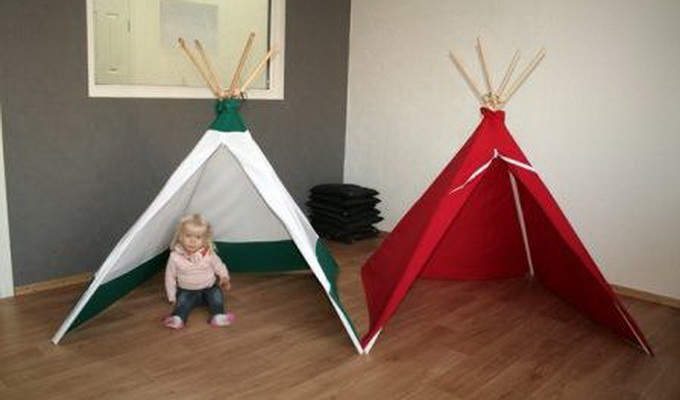
An old playpen can be covered with a blanket and a “door” can be cut out in one of the narrow side walls - a wonderful “house”. But this option is possible if you do not plan to have babies anymore and use the playpen for its intended purpose.
Even a sheet hung on a stretched rope can be a hut. To do this, simply pull to the sides and fasten the edges of the sheet so that they do not “collapse”.
Your baby will be happy to hide and play in his "house", and sometimes invite you to visit!
Look at a selection of photos that show toys made with your own hands from improvised materials:


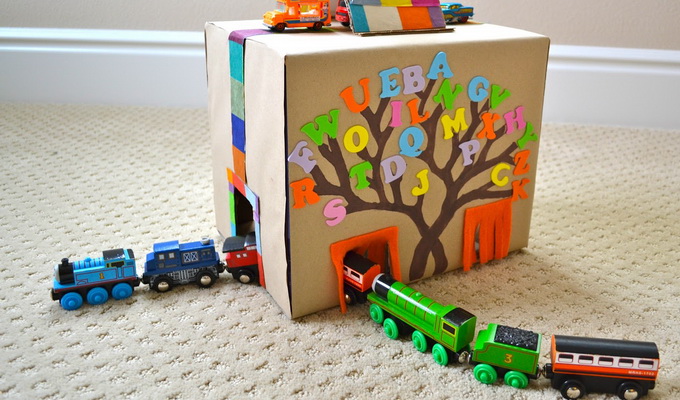
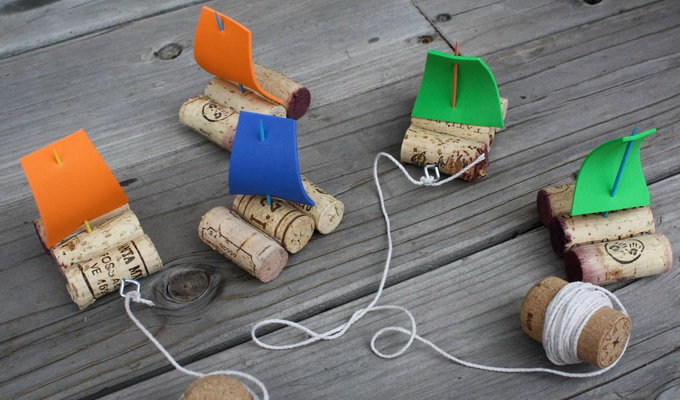
The article has been read 1,282 times.
